The post What is the difference between PFA valve and ptfe valve material? appeared first on Control Valve Manufacturers?.
]]>
pfa valve and ptfe valve Introduction
Material selection is a critical factor in the design and performance of industrial valves, influencing their durability, efficiency, and suitability for specific applications. Among the most widely used materials in this field are PTFE and PFA, both renowned for their superior chemical resistance and adaptability across diverse industries. PTFE, commonly referred to as Teflon, has become synonymous with reliability in harsh environments. Making it the material of choice for components like PTFE valves and PTFE lined valve systems.
On the other hand, PFA offers a unique blend of properties. Including improved flexibility and resilience against cracking. Which positions it as the ideal option for specialized uses, as seen in PFA lined valve designs. The distinction between a PFA valve and PTFE valve lies in their performance under varying conditions. Such as temperature extremes, chemical exposure, and physical stress. Understanding these differences is vital for engineers and decision-makers who aim to ensure system integrity, minimize maintenance, and reduce operational costs. This article unpacks the key attributes of PTFE and PFA, how they impact valve functionality. And provides guidance on choosing between a PFA valve and PTFE valve for optimal results in industrial fluid control.

Understanding PFA and PTFE Materials
Polytetrafluoroethylene (PTFE) and Perfluoroalkoxy (PFA) are two high-performance fluoropolymers that play critical roles in the design and functionality of industrial valves. PTFE, widely recognized by its trade name Teflon, celebrate for its exceptional chemical resistance, high thermal tolerance, and low friction coefficien. Making it an indispensable material in the production of PTFE valves and PTFE lined valve systems used in industries such as chemical processing and pharmaceuticals.
On the other hand, PFA shares many properties with PTFE but offers enhanced flexibility. Improved crack resistance, and transparency. Which makes it a preferred choice for specialized applications like semiconductor manufacturing and corrosive gas handling. These qualities are particularly evident in PFA lined valve designs. Which are engineered for demanding environments where mechanical stress and chemical exposure are prevalent. While both materials excel in areas such as resistance to extreme temperatures and aggressive chemicals. Their differences make them suitable for distinct industrial scenarios. The versatility and reliability of these materials ensure that selecting between a PFA valve and PTFE valve depends largely on the specific operational requirements. Such as system rigidity, environmental demands, and longevity expectations. By understanding the unique characteristics of PTFE and PFA. Engineers and manufacturers can make informed decisions, ensuring optimal performance, safety, and cost-effectiveness in their fluid control systems.

Key Differences Between PFA Valve and PTFE Valve Materials
While both PFA and PTFE high-performance fluoropolymers know for their exceptional chemical resistance and durability. There are distinct differences between the two that greatly impact their application in industrial valves. PTFE, also commonly referred to as Teflon, renown for its outstanding resistance to extreme temperatures, low friction coefficient. And unmatched stability in chemically aggressive environments. Making it a popular choice for PTFE valves and PTFE lined valve systems used in industries such as chemical processing, oil and gas, and pharmaceuticals.
On the other hand, PFA offers similar chemical resistance but provides added benefits. Such as improved flexibility, superior crack resistance, and the ability to maintain its integrity under mechanical stress. These features make PFA lined valve systems especially well-suited for demanding applications such as semiconductor manufacturing and handling corrosive gases. The key difference lies in the material properties under stress and thermal conditions. While PTFE excels in high thermal resistance and static applications. PFA’s flexibility and structural integrity under dynamic conditions give it an edge in environments requiring resilience against mechanical wear or thermal cycling. Selecting the right solution between a PFA valve and PTFE valve depends on the specific requirements of your operation. Including factors like operating temperature, chemical exposure. And mechanical loads. Understanding these differences allows engineers to optimize system longevity and performance while reducing maintenance costs in a wide range of industrial fluid control applications.
Applications of PFA and PTFE Valves
PFA and PTFE valves are integral components in a variety of industrial applications due to their exceptional chemical resistance and durability. PTFE, widely recognized as Teflon, commonly use in PTFE valves and PTFE lined valve systems for industries like chemical processing, pharmaceuticals, and oil and gas. Its ability to withstand extreme temperatures and resist harsh chemicals makes it indispensable for processes involving highly corrosive or reactive substances. On the other hand, PFA valves and PFA lined valve systems are specifically designed for even more demanding environments. With enhanced flexibility, superior crack resistance. And the ability to maintain structural integrity under dynamic conditions. PFA valves excel in applications such as semiconductor manufacturing, where purity and resilience are paramount.
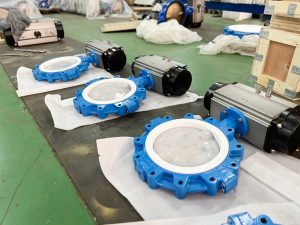
Both PFA and PTFE are used in environments requiring minimal friction and no contamination. But their distinctions in mechanical strength and thermal performance often dictate their suitability for specific tasks. For example, while a PTFE valve might be ideal for static applications in high-temperature settings, a PFA valve offers advantages in dynamic systems where mechanical stress and thermal cycling occur. Whether discussing PFA valve and PTFE valve requirements for corrosive fluids, gas handling. Or precision-focused industries, the unique properties of these materials allow for safe, efficient, and long-lasting fluid control in critical applications.
Benefits of PFA and PTFE Valves
PFA and PTFE valves offer a wide range of benefits that make them indispensable in industrial fluid control systems. Both materials are renowned for their outstanding chemical resistance. Allowing them to perform reliably even when exposed to highly aggressive or corrosive substances. PTFE, commonly recognized as Teflon, showcases exceptional resistance to extreme temperatures and low friction. Making PTFE valves and PTFE lined valve systems ideal for processes requiring stability and safety in harsh chemical environments.
Similarly, PFA valves and PFA lined valve systems build on these properties while offering additional advantages such as enhanced flexibility, superior crack resistance. And the ability to handle mechanical stress and thermal cycling. These attributes ensure that PFA valve and PTFE valve solutions deliver long-lasting durability and reduced risk of failure under demanding conditions. Their versatility extends across industries including chemical processing, oil and gas, pharmaceuticals, and semiconductor manufacturing. By minimizing wear, reducing maintenance requirements, and sustaining operational reliability in critical systems, PFA and PTFE valves enhance overall efficiency. Additionally, the ability of these valves to prevent contamination makes them an excellent choice for applications where purity is paramount. Whether selecting a PTFE valve for a high-temperature application or a PFA valve for dynamic mechanical loads, the benefits provided by these materials contribute to cost-effectiveness, system longevity, and optimal performance in industrial operations.
Choosing Between a PFA Valve and PTFE Valve
Choosing between a PFA valve and PTFE valve requires a thorough evaluation of your specific operational needs. As both options excel in distinct industrial environments. PTFE, widely recognized as Teflon, is a material of choice for PTFE valves and PTFE lined valve systems due to its unrivaled chemical resistance and ability to withstand extreme temperatures. This makes PTFE an excellent option for static applications and industries that require resilience in chemically aggressive or high-temperature conditions, such as chemical processing, oil and gas, and pharmaceuticals.
On the other hand, a PFA valve or PFA lined valve offers similar chemical compatibility but engineer with enhanced flexibility. Superior crack resistance, and the ability to endure repeated thermal cycling and mechanical stress. These features make PFA valves particularly suitable for dynamic environments, such as those in semiconductor manufacturing and precision fluid systems, where material integrity under stress is critical. When making a decision, factors like chemical exposure, operating temperature, mechanical load, and cost must be carefully weighed. For instance, a PTFE valve might be ideal for processes requiring high thermal resistance without frequent mechanical impact, while a PFA valve stands out in situations where durability under cyclical conditions or purity standards are paramount. By aligning the choice of material with specific industrial requirements, operators can ensure optimal performance, longevity, and cost-efficiency in fluid control systems..
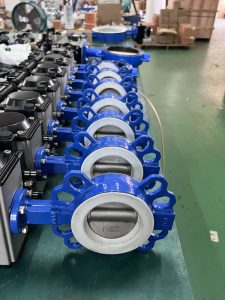
Summary and Recommendations
PFA and PTFE valves, widely recognized for their exceptional chemical resistance and durability. Are critical components in industrial fluid control systems across various sectors. PTFE, commonly referred to as Teflon, exhibits unparalleled resistance to aggressive chemicals and extreme temperatures.Making PTFE valves and PTFE lined valve solutions ideal for static applications in harsh environments such as chemical processing, oil and gas, and pharmaceuticals. PFA valves and PFA lined valve systems, while offering similar chemical resilience. Provide additional benefits like enhanced flexibility, superior crack resistance, and the ability to withstand mechanical stress and thermal cycling.
These qualities make PFA valves a preferred choice for dynamic applications, such as those found in semiconductor manufacturing or systems requiring high material purity. When selecting between a PFA valve and PTFE valve, factors like operating temperature, chemical compatibility, exposure to mechanical stresses, and long-term cost considerations should guide the decision. A PTFE valve may be the best option for high-temperature static systems. While a PFA valve highly recommend for environments involving repetitive mechanical loads or stringent purity standards. Understanding these properties and differences ensures that operators can achieve optimal performance, system longevity, and cost-effectiveness, while addressing the specific demands of their industrial processes.
FAQ
Q1. What is the warranty period for your pfa valve?
Pfa valve come with a standard warranty period of 12 months (1 years) from the date of delivery. This warranty covers manufacturing defects and materials under normal operating conditions as specified in the product manual.
Q2. How are? Pfa valve prices determined?
Prices for Pfa valve is influenced by several factors. Including the valve’s size, material composition (e.g., stainless steel, brass, or PVC), pressure ratings, end connection types. And any additional customisation or certifications required. Specialised features such as fire-safe designs or anti-static devices can also impact the cost.
Q3. What is the standard delivery time for a Pfa valve?
Our standard delivery time for Pfa valve is 4–6 weeks, depending on the order size and customisation requirements. For urgent requests, we offer expedited delivery options upon request.
Our logistics partners ensure fast and reliable delivery to meet engineering project timelines, regardless of location.
Q4. Common Applications of? Pfa?valve
Pfa valve a versatile valve type design with three/two ports for fluid flow. These ports can be configured to allow various functions. Such as mixing, diverting, or completely shutting off flow.
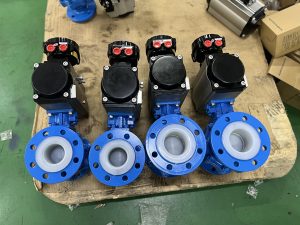
pfa valve and ptfe valve Conclusion
PFA and PTFE materials each excel in distinct applications, making the choice between a PFA valve and PTFE valve highly dependent on operational requirements. PTFE, commonly recognized as Teflon, offers outstanding chemical resistance and remarkable thermal stability. Making PTFE valves and PTFE lined valve systems ideal for static environments exposed to extreme temperatures and aggressive chemicals. This makes them a reliable option for industries such as chemical processing, oil and gas, and pharmaceuticals.
On the other hand, PFA valves and PFA lined valve systems combine similar chemical resistance with superior mechanical flexibility, crack resistance, and the ability to endure thermal cycling. These features make PFA particularly well-suited for dynamic applications like semiconductor manufacturing or systems requiring high purity standards. Ultimately, while PTFE provides resilience in harsh, static conditions, PFA better handles dynamic stresses and repeated thermal variations. Carefully considering factors like chemical compatibility, temperature, mechanical load, and purity needs will help operators choose the most effective solution. Whether it’s a Teflon-based PTFE valve or a PFA valve for more demanding mechanical conditions, these materials ensure efficiency, durability, and cost-effectiveness in diverse industrial applications.
The post What is the difference between PFA valve and ptfe valve material? appeared first on Control Valve Manufacturers?.
]]>The post What is PTFE lined butterfly valve? appeared first on Control Valve Manufacturers?.
]]>The article explores the unique components and features of PTFE lined butterfly valves. Comparing them to alternatives like PFA and PTFE valves, as well as FEP lined ball valves. It also highlights the benefits of using PTFE lining. Including reduced maintenance needs, extended lifespan, and resistance to high temperatures and caustic materials.
Introduction
A PTFE lined butterfly valve is a high-performance valve engineered for demanding industrial tasks that require superior chemical resistance and durability. Designed to improve upon traditional butterfly valves. These valves are lined with PTFE, a material renowned for its ability to withstand corrosive chemicals and extreme conditions. Industries such as chemical processing, pharmaceuticals, and food production often rely on PTFE lined butterfly valves to ensure consistent and safe operation in aggressive environments. They stand out due to their efficiency and reliability, offering advantages like reduced maintenance costs and extended lifespan.

When compared to other options, such as PFA valve and PTFE valve configurations or even fep lined ball valve systems. PTFE butterfly valves excel in delivering robust and versatile solutions. With their advanced butterfly valve lining and high compatibility across various applications. These lined butterfly valve models remain a top choice for professionals seeking optimal performance and operational integrity.
What is a PTFE Lined Butterfly Valve?
A PTFE lined butterfly valve is a specialized type of valve designed for precision control and reliability in complex industrial settings. Unlike standard valves, a PTFE lined butterfly valve incorporates a lining made from polytetrafluoroethylene (PTFE), a highly resilient material known for its outstanding chemical resistance and ability to endure abrasive and corrosive environments. This design ensures smooth operation and extended durability. Even under high temperatures or with corrosive media.
Commonly compared to other configurations like a PFA valve and PTFE valve or even the fep lined ball valve. PTFE lined butterfly valves are favored for their lightweight architecture, efficient flow regulation, and ease of maintenance. The butterfly valve lining provides an additional layer of protection. Making these valves particularly suitable for industries such as chemical processing, food and beverage production, and pharmaceutical manufacturing. These lined butterfly valves not only minimize the risk of contamination or system failure but also deliver cost-effective solutions with enhanced operational lifespan and energy efficiency. Cementing their role as an indispensable choice in demanding applications.
Components and Features of PTFE Lined Butterfly Valves
A PTFE lined butterfly valve incorporates advanced components and materials designed to deliver exceptional performance in harsh industrial environments. At its core, the valve consists of a disc that regulates flow, a valve body, and a resilient PTFE lining that provides superior chemical resistance and prevents wear caused by corrosive or abrasive media. The lining acts as a protective barrier, ensuring smooth operation even under extreme pressures and temperatures. The valve’s stem and seal engineer for reliability. Reducing the risk of leakage and enhancing operational efficiency.
When compared to alternatives like a PFA valve and PTFE valve or even an fep lined ball valve. The PTFE lined butterfly valve stands out for its compact design, lightweight construction, and ease of installation. The butterfly valve lining provides superior durability, making the valve suitable for industries such as chemical processing, pharmaceuticals, and water treatment. Additionally, these lined butterfly valves are known for their low maintenance requirements and long service life,. Ensuring cost savings for operators while delivering reliable and consistent performance across a wide range of applications.
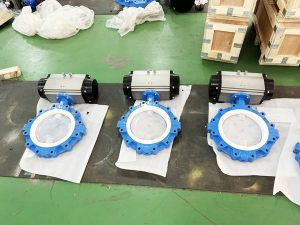
Applications and Benefits of PTFE Lined Butterfly Valves
PTFE lined butterfly valves are indispensable across a wide range of industries that require reliable and efficient fluid control in challenging conditions. These valves are particularly vital in sectors like chemical processing, pharmaceuticals, food and beverage production, and water treatment. Where the ability to handle corrosive or abrasive media is essential. The PTFE lining acts as a shield, protecting the valve components from deterioration and ensuring long-term operational longevity. When compared to other options, such as PFA valve and PTFE valve designs or even the fep lined ball valve. PTFE lined butterfly valves excel due to their lightweight structure, compact design. And superior resistance to chemical attacks. The butterfly valve lining not only minimizes wear and tear but also contributes to leak-free performance. Making these valves highly dependable.
Additionally, their easy maintenance and extended life cycle reduce overall operating costs. Making them a cost-effective choice for facilities requiring high performance and durability. These lined butterfly valves are also known for their versatility, seamlessly integrating with various systems to maintain process efficiency and safety, even under the most demanding conditions.
Comparisons with Other Valve Types
When comparing the PTFE lined butterfly valve to other valve types. Such as the PFA valve and PTFE valve or the fep lined ball valve, distinct advantages in design, functionality, and application become evident. The PTFE lined butterfly valve characterize by its compact size and lightweight construction. Which makes it a versatile choice for installations where space is limited or weight constraints are critical. This sets it apart from the fep lined ball valve, which, while robust, is bulkier and often less efficient for quick shut-off applications. The butterfly valve lining in PTFE lined models offers unmatched resistance to corrosive chemicals and abrasive materials. Providing a longer operational life even in extreme environments. Unlike some PFA valve and PTFE valve options that may wear out faster under similar conditions.
Additionally, the simple yet effective design of the lined butterfly valve enables smooth flow control. Reducing pressure drops and improving overall efficiency compared to other valve types. This makes the PTFE lined butterfly valve particularly advantageous in industries like chemical processing and water treatment. Where consistent performance and low maintenance are crucial. By offering higher durability, ease of operation, and superior chemical resistance. The PTFE lined butterfly valve stands out as a cost-effective and reliable solution for demanding industrial applications.
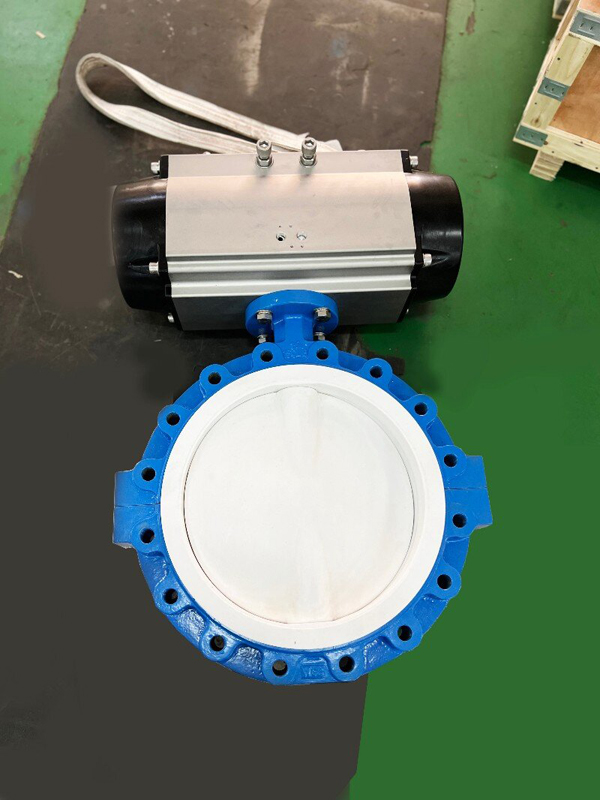
How to Choose the Right PTFE Lined Butterfly Valve
Choosing the right PTFE lined butterfly valve requires a thorough understanding of your application’s specific needs and operating requirements. Start by evaluating the chemical compatibility of the valve with the media it will handle,. As this ensures the PTFE lining provides maximum protection against corrosion and wear. Consider the pressure and temperature ratings of the valve to ensure it can withstand the operating conditions without compromising performance or structural integrity.
Additionally, assess the differences between a PTFE lined butterfly valve, PFA valve and PTFE valve. And an fep lined ball valve, as each offers distinct advantages. For instance, PTFE lined butterfly valves are lightweight and compact, making them ideal for systems with space and weight constraints,. While fep lined ball valves may be better suited for applications requiring higher pressure tolerances. Pay close attention to the butterfly valve lining, as its durability directly impacts longevity and reliability in demanding environments.
Lastly, factor in maintenance needs and ease of installation to optimize long-term operational efficiency and cost-effectiveness. Selecting the correct lined butterfly valve not only enhances system performance but also ensures safety and reduced downtime in industrial processes.
Maintenance and Longevity of PTFE Lined Butterfly Valves
Proper maintenance is key to ensuring the longevity and optimal performance of PTFE lined butterfly valves across a variety of industrial applications. The PTFE lining, known for its exceptional resistance to chemicals and wear, significantly reduces the likelihood of corrosion. Extending the lifespan of the valve components even under harsh operating conditions. Regular inspections to detect wear on the butterfly valve lining. As well as prompt replacement of seals and gaskets, help maintain leak-free operation and prevent system failures. When compared to alternatives like PFA valve and PTFE valve designs or fep lined ball valves. PTFE lined butterfly valves often require less intensive maintenance due to their fewer moving parts and straightforward construction. This simplicity translates into fewer opportunities for mechanical failure.
Additionally, their lightweight and compact design streamline servicing, minimizing downtime during repairs. Using high-quality PTFE lined butterfly valves and adhering to proper maintenance practices. Such as routinely cleaning and lubricating moving components, ensures consistent performance, reduced operational costs, and extended service life. These factors make lined butterfly valves a reliable and efficient choice for industries demanding durable and low-maintenance fluid control solutions.
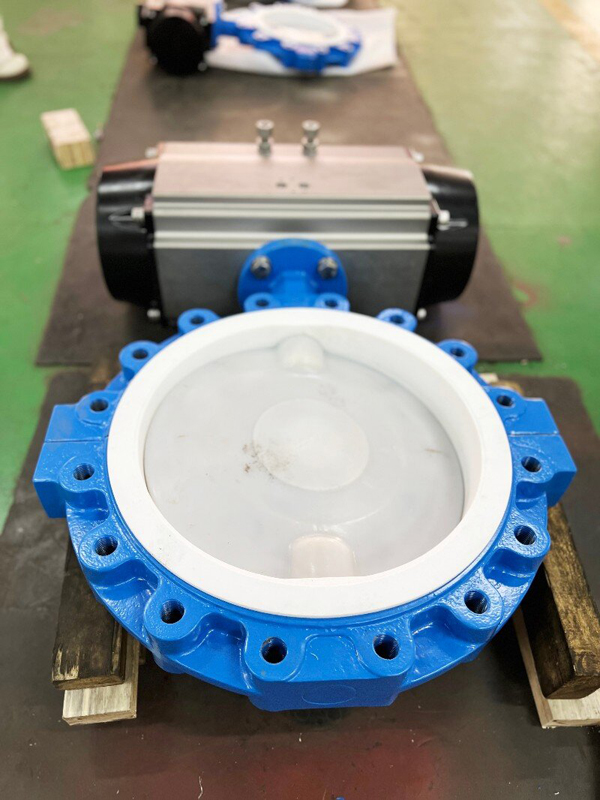
FAQ
What is a PTFE-lined butterfly valve?
A PTFE-lined butterfly valve is a type of butterfly valve where the internal surface, including the disc and the body, is coated with PTFE (Polytetrafluoroethylene). This lining provides exceptional chemical resistance and low friction, making the valve ideal for handling corrosive or abrasive media.
What are the main features of PTFE-lined butterfly valves?
PTFE-lined butterfly valves feature a robust design with a corrosion-resistant PTFE coating, ensuring reliable performance in challenging environments. They offer smooth operation due to PTFE’s low friction properties, excellent sealing capabilities, and compatibility with a wide range of chemicals.
What are the benefits of using PTFE-lined butterfly valves?
These valves provide superior resistance to harsh chemicals, high thermal stability, and a long service life. They minimize wear and tear, reduce the risk of leaks, and require low maintenance. PTFE’s non-stick property also helps prevent media buildup, ensuring smooth flow and reducing downtime.
What industries commonly use PTFE-lined butterfly valves?
PTFE-lined butterfly valves are a favored choice in industries such as chemical processing, wastewater treatment, food and beverage, pharmaceuticals, and power generation. They are particularly effective when dealing with corrosive fluids, slurries, or media with suspended particles.
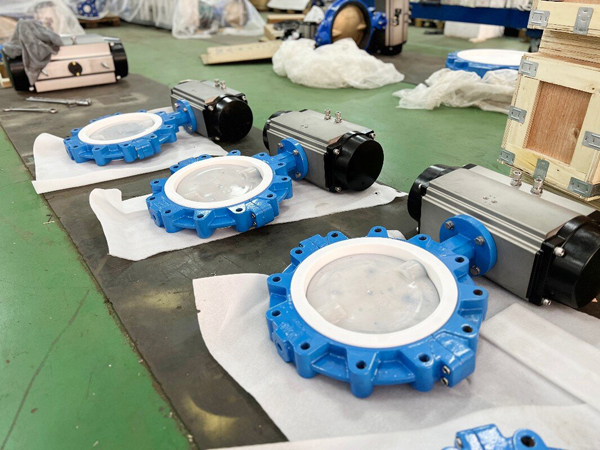
Conclusion
A PTFE lined butterfly valve is a highly reliable and efficient solution for managing fluid flow in demanding industrial environments. Featuring a durable butterfly valve lining made from PTFE, these valves offer exceptional resistance to corrosive chemicals, high temperatures, and abrasive materials. Ensuring longevity even under extreme conditions. Unlike other options, such as PFA valve and PTFE valve designs or an fep lined ball valve, PTFE lined butterfly valves stand out for their lightweight, compact design, and simplified functionality. These characteristics make them ideal for installations where space, weight, and maintenance accessibility are critical factors. Lined butterfly valves? commonly use in industries like chemical processing, pharmaceuticals, water treatment, and food production.
Where maintaining system integrity and ensuring safety are paramount. Their easy operation, low maintenance needs, and compatibility with aggressive chemicals make them a cost-effective choice. By combining resilience, operational efficiency, and versatility, PTFE lined butterfly valves have become an essential component in modern industrial fluid control systems. Whether for precise flow regulation, reliable isolation. Or consistent performance under harsh conditions, these valves deliver the durability and quality necessary for optimal system performance.
The post What is PTFE lined butterfly valve? appeared first on Control Valve Manufacturers?.
]]>The post What is PFA lined valves? appeared first on Control Valve Manufacturers?.
]]>Industries such as chemical processing, pharmaceuticals, oil & gas, and water treatment heavily rely on pfa lined valve systems for their durability and ability to maintain operational integrity under extreme conditions. Whether used in a lined ball valve configuration or for specialized tasks involving reactive chemicals. PFA-lined solutions meet stringent safety and efficiency requirements, underscoring their critical role in modern industrial operations.
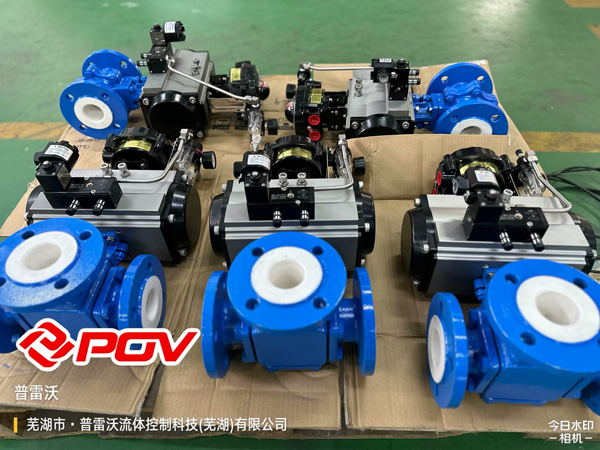
Introduction
PFA lined valves are an advanced solution for industries requiring robust and reliable equipment to handle corrosive and high-purity substances. Featuring a Perfluoroalkoxy (PFA) polymer lining, these valves stand out for their exceptional chemical resistance, stress crack tolerance. And ability to perform under extreme temperatures and pressures. A pfa lined valve is frequently compared to other solutions such as ptfe lined valve, lined ball valve, fep lined ball valve, and teflon valve. But it offers unique advantages in terms of flexibility and durability. These attributes make PFA lined valves indispensable in industries like chemical processing, pharmaceuticals, water treatment, and oil & gas. Where operational integrity and safety are paramount. Whether utilized in a ball valve design to control fluid flow or incorporated into systems requiring high-purity standards. PFA lined valves deliver unmatched performance, meeting the critical demands of modern industrial applications efficiently and reliably.
What are PFA Lined Valves?
PFA lined valves, short for Perfluoroalkoxy polymer lined valves, are high-performance components crafted to handle corrosive liquids, gases. And high-purity mediums in demanding industrial environments. A pfa lined valve features a protective inner lining made of PFA, a fluoropolymer known for its exceptional chemical resistance, high-temperature tolerance, and flexibility. This makes it particularly effective for applications involving aggressive acids, alkalis, and solvents. When compared to a ptfe lined valve, PFA offers improved stress crack resistance and superior reliability in extreme conditions. Making it a preferred choice for long-term use.
Similarly, while other options like lined ball valve, fep lined ball valve, and teflon valve provide corrosion resistance. PFA stands out due to its enhanced durability and ability to maintain consistency in both high-pressure and high-temperature environments. Industries such as chemical processing, pharmaceuticals, oil & gas. And water treatment heavily rely on PFA lined valves for their ability to safeguard operations from contamination and material degradation. Whether in a ball valve configuration for precise flow regulation or as part of a larger system. PFA lined valves offer unmatched efficiency, ensuring both safety and operational excellence across various applications.
Benefits of PFA Lined Valves
PFA lined valves offer a range of advantages that make them indispensable in industries dealing with corrosive or high-purity substances. A pfa lined valve features a robust Perfluoroalkoxy polymer lining, which provides exceptional resistance to a wide variety of aggressive chemicals. Including strong acids, bases, and solvents. This superior chemical resistance ensures long-term durability and minimizes the risk of material degradation. Even in extreme operating conditions. Compared to alternatives like the ptfe lined valve, lined ball valve, fep lined ball valve, and teflon valve. PFA lined valves stand out for their enhanced flexibility, stress crack resistance, and consistent performance under high temperatures and pressures.

Their versatility also makes them ideal for various critical applications in industries such as chemical processing, pharmaceuticals, and water treatment. PFA lined valves are suitable for precise flow regulation in lined ball valve configurations while ensuring maximum operational safety and efficiency. Their ability to maintain structural integrity and resist contamination makes them a trusted solution for environments where reliable performance is paramount.
Applications of PFA Lined Valves
PFA lined valves are indispensable in a wide range of industries that require superior resistance to corrosive substances, high temperatures, and stringent purity standards. A pfa lined valve commonly use in chemical processing plants, where it safely handles aggressive acids, bases. And volatile organic compounds without degrading.
Similarly, these valves play a critical role in the pharmaceutical sector. Where maintaining contamination-free environments is essential. Their applications extend to water treatment systems. Ensuring the efficient regulation of fluid flow in processes that involve harsh chemicals. Compared to other solutions like the ptfe lined valve, lined ball valve, fep lined ball valve, and teflon valve. PFA lined valves deliver higher reliability and flexibility under extreme conditions.
For example, in lined ball valve configurations, these valves provide precise control in operations involving high pressures and reactive chemicals. Additionally, their durability and chemical resistance make them ideal for handling substances in industries such as oil & gas, food processing, and semiconductor manufacturing. Whether used in high-purity applications or in systems requiring robust corrosion resistance. PFA lined valves consistently meet the diverse demands of modern industrial environments.
Industries that Rely on Lined Valves
Industries across the globe depend on the superior performance of pfa lined valves to handle demanding operational requirements while ensuring safety and efficiency. The chemical processing industry heavily relies on these valves to manage corrosive acids, alkalis, and reactive chemicals. As their PFA lining provides exceptional resistance to chemical attack and degradation. Similarly, the pharmaceutical sector uses pfa lined valves to maintain sterile and contamination-free environments critical for producing high-purity medications. Water treatment facilities also benefit from these valves in applications where aggressive disinfectants and chemicals are involved. Guaranteeing long-term reliability and durability.
Additionally, industries like oil & gas and food processing turn to lined ball valve configurations with PFA lining for their ability to withstand harsh environments. Ensuring precise flow control and operational stability. While alternatives such as ptfe lined valves, fep lined ball valves, and teflon valves offer notable chemical resistance. PFA excels in providing superior flexibility, stress crack resistance, and consistent performance in extreme conditions. Whether managing volatile compounds or high-temperature processes. PFA lined valves are a trusted solution for industries where operational integrity and safety are non-negotiable.
Comparison of PFA Lined Valves with Other Lined Valves
When comparing a pfa lined valve to other lined valve options like ptfe lined valve, fep lined ball valve, and teflon valve, it becomes evident that each material offers unique benefits tailored to specific industrial needs. PFA (Perfluoroalkoxy polymer) lined valves excel in chemical resistance, stress crack resistance, and durability. Making them an ideal choice for managing highly corrosive and reactive substances under extreme temperatures and pressures. Unlike ptfe lined valves. Which are also chemically resistant but less flexible, PFA’s polymer structure provides enhanced mechanical strength and better performance in dynamic environments.
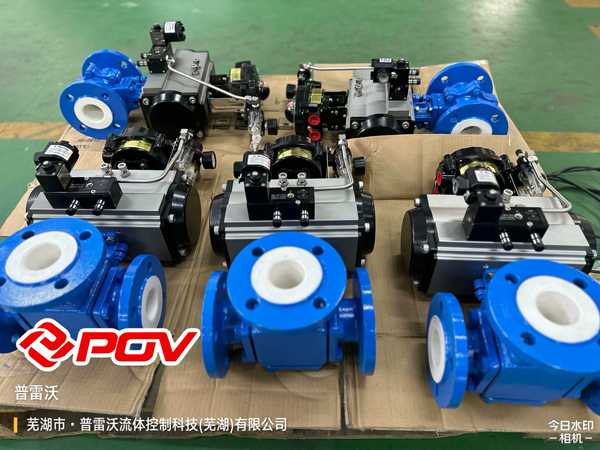
Similarly, while fep lined ball valves share some high-purity and chemical resistance properties with PFA, they tend to have lower thermal stability and flexibility, limiting their use in more extreme conditions. The term teflon valves often refers to those lined with PTFE or similar fluoropolymers. But they can lack the same robustness and stress crack resistance that PFA offers. Especially in high-temperature or high-pressure applications. Furthermore, lined ball valves with PFA linings ensure precise and safe fluid control in aggressive chemical processing, water treatment, or pharmaceutical pipelines. Although all these materials demonstrate outstanding chemical resistance. PFA stands out as a versatile and high-performance lining solution for industries demanding ultimate reliability without compromising on safety or efficiency.
Selection Criteria for PFA Lined Valves
Selecting the right valve for industrial processes often involves a detailed comparison of criteria. Particularly when evaluating a pfa lined valve against alternatives like ptfe lined valve, fep lined ball valve, and teflon valve variants. One critical factor is chemical compatibility; PFA lining delivers exceptional resistance to a wide range of aggressive chemicals. Surpassing PTFE and FEP linings in handling more reactive substances over extended periods. Temperature resistance is another key consideration. With PFA’s ability to maintain integrity at higher temperatures, it is a preferred choice for environments that demand thermal stability, whereas ptfe lined valves and fep lined ball valves may? more limit in extremely high-heat scenarios.
Mechanical strength also sets PFA apart, as its superior flexibility and stress crack resistance allow it to endure dynamic operating conditions and prolonged use without compromising valve functionality. Cost-effectiveness can vary depending on the application. But the durability and long service life of PFA lined valves often provide better value in industries requiring long-term, reliable solutions.
Additionally, when choosing a lined ball valve, PFA linings ensure precise flow control even in highly corrosive or high-purity systems. While coverings like FEP or generic teflon valves may not match PFA’s performance under extreme demands. Therefore, the selection process hinges on balancing these factors to align with the specific operational requirements of applications in industries such as chemical processing, water treatment, and pharmaceuticals.
Maintenance and Longevity of PFA Lined Valves
When choosing a pfa lined valve, several critical selection criteria set it apart from other options like ptfe lined valve, fep lined ball valve, and teflon valve configurations. Chemical compatibility is often a primary factor. With PFA linings excelling in resistance to highly aggressive chemicals. Including strong acids and alkalis, outperforming PTFE and FEP linings in many applications. Temperature resistance also plays a pivotal role. As PFA can withstand higher thermal ranges without losing structural integrity. Making it ideal for processes involving elevated operational temperatures.
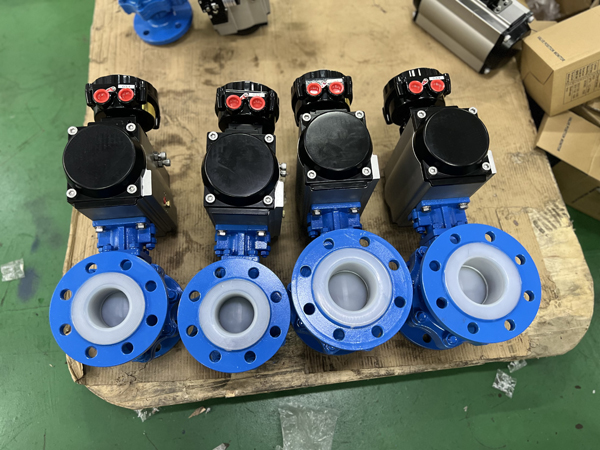
Meanwhile, ptfe lined valves and fep lined ball valves may exhibit limitations under extreme heat. Mechanical strength is another area where PFA stands out, offering excellent flexibility and superior resistance to stress cracks. Even in dynamic and demanding systems. This durability ensures long-term reliability under harsh operating conditions. Which some generic teflon valve options cannot consistently provide. Cost-effectiveness is equally important; while PFA lined valves may involve a higher initial investment. Their extended service life and reduced maintenance requirements often translate to lower total lifecycle costs. For industries requiring precise flow control, such as chemical processing, pharmaceuticals, and water treatment, lined ball valves with PFA offer unparalleled performance, delivering both safety and efficiency. By weighing these factors, businesses can identify the most suitable valve option to meet their specific operational needs.
FAQ
What does PFA stand for in valves?
PFA stands for Perfluoroalkoxy Alkane. It is a fluoropolymer known for its chemical resistance, non-stick properties, and high thermal stability, making it an excellent lining material for industrial valves.
What are PFA-lined valves?
PFA valves are industrial valves with an internal coating or lining of PFA. This lining provides exceptional resistance to corrosive chemicals and extreme temperatures, protecting the valve body and ensuring reliable performance in harsh environments.
What are the benefits of PFA-lined valves?
PFA-lined valves offer superior corrosion resistance, making them suitable for aggressive chemicals like acids, alkalis, and solvents. They also withstand high temperatures and provide a smooth, non-stick surface that minimizes wear and buildup, extending the valve’s service life.
What industries use PFA-lined valves?
PFA-lined valves are widely used in industries such as chemical processing, petrochemicals, pharmaceuticals, food and beverage, and power generation. They are particularly effective in applications involving highly corrosive or hazardous substances.
How do PFA-lined valves compare to PTFE-lined valves?
While both PFA and PTFE offer exceptional chemical resistance and thermal stability, PFA is more flexible and has a smoother surface finish. This makes PFA-lined valves more resistant to cracking and easier to clean, making them the preferred choice in applications requiring higher durability and hygiene.
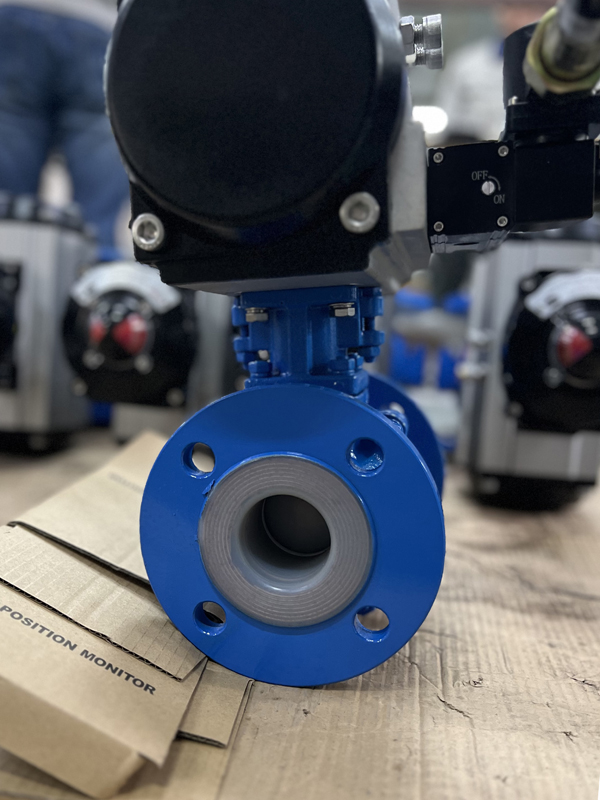
Conclusion
PFA lined valves are a critical solution for industries requiring superior chemical resistance, durability, and high-performance flow control. Engineered with Perfluoroalkoxy (PFA) lining, these valves excel in handling highly corrosive substances, extreme temperatures, and demanding operating conditions. When compared to options like the ptfe ball valve, ptfe lined valve, fep lined ball valve, and teflon valve, PFA lined valves often stand out due to their enhanced stress crack resistance, mechanical strength, and thermal stability. These qualities make them ideal for aggressive chemical processing, water treatment, and high-purity pharmaceutical applications.
A lined ball valve with PFA lining ensures precise, reliable fluid control even in the harshest environments, outperforming other lined materials in long-term durability and safety. While PTFE and FEP valves also offer excellent chemical resistance, they may fall short in handling higher thermal ranges or dynamic stress scenarios where PFA demonstrates superior flexibility and longevity. Similarly, while Teflon valves are highly effective in standard applications, they may not consistently deliver the same robustness as PFA under extreme conditions. Overall, PFA lined valves offer a versatile, high-performance solution, ensuring operational reliability and safety across a wide range of demanding industries.
The post What is PFA lined valves? appeared first on Control Valve Manufacturers?.
]]>The post What is the full form of PTFE in ball valve? appeared first on Control Valve Manufacturers?.
]]>PTFE plays a critical role in enhancing the performance of PTFE lined valves and lined ball valves. Offering exceptional durability and efficiency. The post also highlights the differences between FEP lined ball valves and PTFE-lined alternatives. Including specific industry applications like chemical processing, pharmaceuticals, and oil & gas.
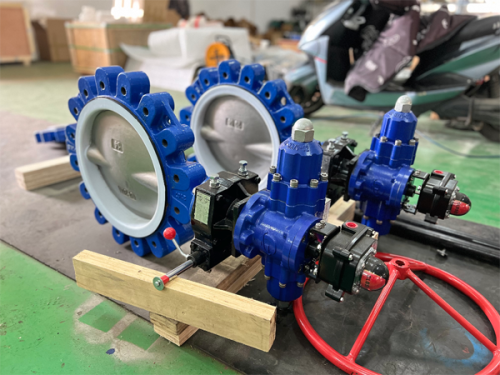
Introduction
Polytetrafluoroethylene, better known as PTFE, has become a groundbreaking material in the valve manufacturing industry. Especially in the design of the highly efficient PTFE ball valve. Renowned for its exceptional chemical resistance, low friction properties, and adaptability to a wide range of temperatures. PTFE has set a high standard for durability and performance across various industries. When incorporated into the design of PTFE lined valves and lined ball valves. This unique polymer ensures reliable operation even under harsh conditions. Such as exposure to corrosive chemicals or high-pressure environments.
Additionally, advancements in technology have led to the development of FEP lined ball valves. Offering similar efficiency with slight variations in application suitability. Often referred to by its trademark name, Teflon valve. PTFE has earned its reputation as a benchmark material for improving the safety, longevity. And functionality of ball valves across sectors like chemical processing, pharmaceuticals, and oil & gas. This article unpacks the full form of PTFE and explores its pivotal role in revolutionizing valve manufacturing.
What is PTFE?
Polytetrafluoroethylene, commonly abbreviated as PTFE, is a high-performance polymer known for its exceptional chemical resistance, non-reactive nature, and low friction properties. Structurally, PTFE is composed of carbon and fluorine atoms, forming a material that can withstand extreme temperatures and corrosive substances. Making it indispensable in various industrial applications. A key innovation in the valve industry, PTFE is integral to the design of the PTFE ball valve. Where its properties enhance sealing performance and reduce wear and tear.
Similarly, PTFE lined valves and lined ball valves leverage this material for superior durability, reliability. And longevity in handling aggressive chemicals or high-pressure operations. Beyond PTFE-lined options, related systems like FEP lined ball valves. Which use Fluorinated Ethylene Propylene, provide alternatives for specific applications while maintaining similar chemical resistance. Often referred to as Teflon valves due to Teflon being the trademark name for PTFE. These valves underscore the material’s industry-wide importance in ensuring safety, efficiency. And performance in demanding environments like pharmaceuticals, oil & gas, and chemical processing. The versatility and reliability of PTFE make it a central component in modern valve technology.

PTFE in Ball Valves
Polytetrafluoroethylene (PTFE) has transformed the performance and functionality of ball valves. Establishing itself as a critical material in the valve manufacturing industry. Its integration into the design of the PTFE ball valve has paved the way for valves that deliver unmatched chemical resistance, low friction, and exceptional reliability. PTFE lined valves and lined ball valves, engineered with a PTFE lining, are ideal for handling aggressive chemicals, abrasive materials, and high-pressure systems. Ensuring durability even in the harshest environments.
Further innovations, such as FEP lined ball valves, offer alternatives tailored to specific industrial needs while maintaining the same exceptional standards for efficiency and safety. Often referred to as Teflon valves, due to the widespread recognition of Teflon as a trade name for PTFE. These valves have become indispensable across sectors like pharmaceuticals, oil & gas, and chemical processing. By minimizing wear and tear, enhancing sealing efficiency, and extending operational lifespans. PTFE has revolutionized ball valve technology, providing industries with solutions that prioritize performance and long-term reliability.
Applications and Industries
PTFE lined valves, including ptfe ball valve, ptfe lined valve, and lined ball valve, are integral to a wide range of industries due to their exceptional chemical resistance and durability. One of their primary applications is in chemical processing. Where they handle aggressive acids, caustics, and reactive chemicals without degrading. Pharmaceuticals also rely on these valves for sterile and contamination-free processes, as PTFE’s non-stick properties ensure clean handling of sensitive media.
In the oil & gas sector, teflon valve solutions are trusted for their ability to endure harsh environments involving high pressures, temperatures, and corrosive substances. Water treatment facilities use fep lined ball valves and PTFE variants to manage highly corrosive cleaning agents and maintain the integrity of potable water systems. Additionally, PTFE’s low friction coefficient and high temperature resistance make these valves suitable for applications in power generation and food processing. Where performance consistency is critical. By offering reliable sealing, longevity, and versatility. PTFE lined valves have become indispensable across these industries, meeting strict safety and efficiency requirements with unmatched precision.
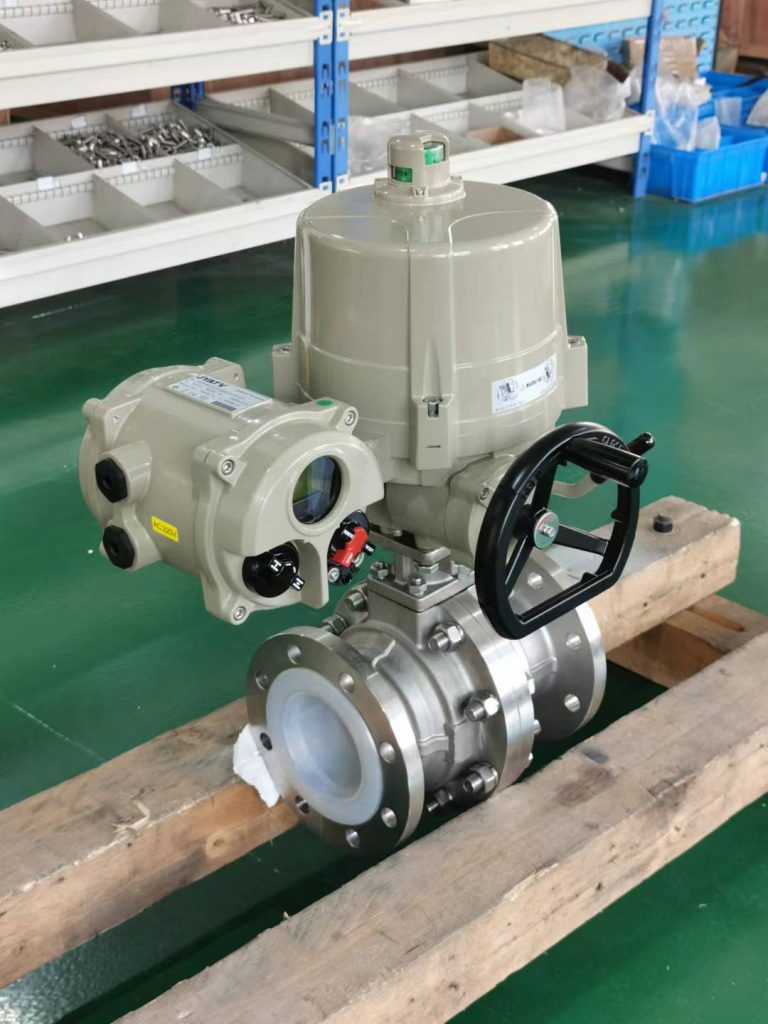
Differences Between PTFE Lined Valves and Other Lined Valves
PTFE lined valves stand out in the industry due to their exceptional chemical resistance, low friction, and ability to withstand extreme temperatures. Making them a preferred choice for handling aggressive or corrosive media in critical operations. Compared to other lined valves, such as FEP lined ball valves. PTFE lined valves demonstrate higher thermal stability. Making them suitable for environments with fluctuating or higher operating temperatures. While both provide excellent chemical resistance, FEP, or Fluorinated Ethylene Propylene, offers better flexibility and clarity. Which may be advantageous in specific applications where mechanical stress or visibility is a concern.A PTFE ball valve or Teflon valve, thanks to its broad compatibility. Also exhibits a longer service life in demanding conditions like chemical processing or pharmaceuticals.
On the other hand, general lined ball valves, which may feature different polymeric linings. Often tailor for less extreme applications, offering cost-efficiency for certain industries without heavily compromising performance. The choice between a PTFE lined valve, FEP lined ball valve. Or other alternatives largely depends on the requirements for temperature tolerance, media compatibility, and mechanical performance. With PTFE remaining a benchmark for durability and reliability in industrial valve technology.
Why Choose PTFE for Valve Linings?
Polytetrafluoroethylene (PTFE) has earned its position as the go-to material for valve linings due to its unparalleled chemical resistance, durability. And versatility in handling extreme operating conditions. This high-performance polymer, famously used in the PTFE ball valve, excels in resisting corrosive chemicals. Ensuring reliability in even the most aggressive environments. Its inclusion in PTFE lined valves and lined ball valves allows for smooth operation with minimal friction. Reducing wear and extending the lifespan of the equipment.
Compared to other materials, such as those used in FEP lined ball valves. PTFE offers superior thermal stability and performance at higher operating temperatures. Making it an ideal choice for industries like chemical processing, pharmaceuticals, and oil & gas. Often referred to as a Teflon valve due to PTFE’s trademark name. Its non-reactive and non-stick properties further enhance its utility in preventing material buildup, ensuring consistent functionality over time. Whether for handling harsh acids, solvents, or high-pressure systems, PTFE remains the material of choice for applications that prioritize safety, efficiency, and long-term value. Making it an indispensable material in modern valve technology.
Common Misconceptions About Teflon Valves
One common misconception about Teflon valves, widely recognized as valves incorporating PTFE (Polytetrafluoroethylene). Is that they are fragile or unsuitable for rigorous industrial applications. This misunderstanding likely arises from the perception of Teflon being a softer polymer. But in reality, PTFE’s unique properties provide unmatched durability for challenging environments. Valves such as the PTFE ball valve, PTFE lined valve, and lined ball valve are engineered to handle extreme conditions. Including highly corrosive chemicals and elevated temperatures, without compromising performance.
Another myth is that Teflon-lined valves are limited to niche uses. But their versatility spans industries like chemical processing, oil & gas, and pharmaceuticals. Where reliability in harsh conditions is a must. Concerns about leakage or degraded performance are also unfounded. As manufacturers extensively test PTFE linings for exceptional sealing efficiency and long-term stability. For applications requiring even greater material flexibility or transparency. Innovations like FEP lined ball valves provide alternatives without diminishing key benefits. Clarifying these inaccuracies demonstrates that Teflon valves excel in both durability and versatility. Proving themselves as indispensable components in modern valve technolog
Considerations When Selecting a PTFE Lined Valve
When selecting a PTFE lined valve, careful consideration of application-specific requirements is crucial to ensure optimal performance and reliability. Key factors include chemical compatibility, as PTFE offers exceptional resistance to aggressive chemicals. Making it ideal for environments dealing with highly corrosive or reactive substances. Temperature range is another significant aspect; PTFE lining, used in products like the ptfe ball valve or teflon valve. Withstands a wide range of operating temperatures, surpassing many alternative materials like FEP. That said, for applications requiring greater mechanical flexibility or transparency. Options like FEP lined ball valves may be more suitable. Pressure requirements should also be evaluated, as the robust lining in PTFE valves enhances durability under high-pressure conditions. Particularly vital in industries like oil & gas or chemical processing.
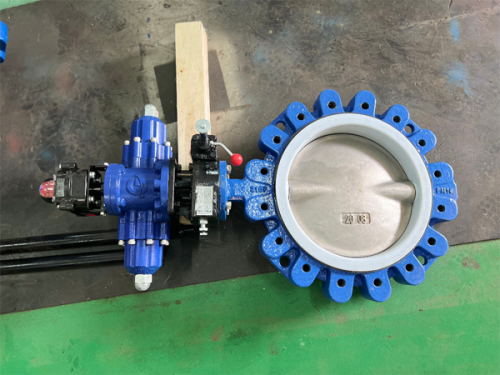
Other considerations include abrasion resistance, sealing efficiency, and maintenance demands. All of which impact the valve’s long-term performance. Beyond the technical specifications, the versatility of a lined ball valve. Whether PTFE lined or otherwise, makes it a preferred choice across diverse sectors. Including pharmaceuticals and water treatment. Balancing these elements ensures the chosen PTFE lined valve delivers unmatched efficiency, safety, and value in its intended application.
FAQ
What does PTFE stand for in ball valves?
PTFE stands for Polytetrafluoroethylene, a high-performance polymer known for its exceptional non-stick properties, chemical resistance, and durability.
What role does PTFE play in ball valves?
PTFE is commonly used as the material for seats and seals in ball valves. Its low friction coefficient ensures smooth operation of the valve, while its excellent sealing capabilities prevent leaks even under high-pressure conditions.
Why is PTFE widely used in ball valve applications?
PTFE is highly resistant to chemicals, extreme temperatures, and corrosion, making it ideal for applications where the flow media might be aggressive or abrasive. Its durability reduces wear and ensures reliable, long-term performance in demanding environments.
What are the key benefits of PTFE in ball valves?
Key benefits of PTFE include low maintenance, extended service life, resistance to nearly all chemicals, and excellent thermal stability. These properties make it a preferred choice for industries such as chemical processing, pharmaceuticals, food and beverage, and petrochemicals.
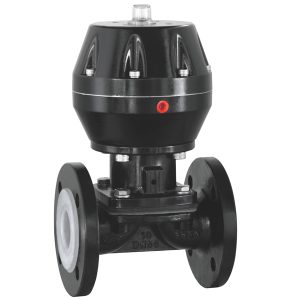
Conclusion
Polytetrafluoroethylene (PTFE) is the full form of PTFE, a revolutionary material at the heart of many high-performance valves like the ptfe ball valve, ptfe lined valve, and lined ball valve. Known for its exceptional properties, PTFE offers unmatched chemical resistance, minimal friction, and the ability to endure extreme temperatures. Making it a preferred choice across industries such as chemical processing, oil & gas, and pharmaceuticals. Its integration into valves ensures reliable operation even in harsh environments dealing with corrosive or reactive substances. Variants like the fep lined ball valve provide added flexibility and transparency, catering to specialized needs without compromising on key advantages.
Commonly referred to as teflon valve due to its trademarked counterpart, PTFE continues to lead in durability and efficiency. Preventing leaks, reducing wear and tear, and enhancing overall system performance. The versatility and reliability of PTFE make it indispensable in modern valve technology. Solidifying its role as a benchmark material for industrial applications worldwide. The importance of PTFE lies not just in its technical excellence but also in its ability to address evolving industry demands with precision and consistency.
The post What is the full form of PTFE in ball valve? appeared first on Control Valve Manufacturers?.
]]>The post What is a lined ball valve? appeared first on Control Valve Manufacturers?.
]]>Introduction
A lined ball valve is a vital component in industrial systems that deal with highly corrosive or abrasive substances. At its core, this specialized valve features a robust ball seated within a protective lining. Such as PTFE (Polytetrafluoroethylene), that shields the valve body and internal components from harsh media. Known for their unparalleled chemical resistance and durability, PTFE lined ball valves are widely employed in demanding sectors like chemical processing, pharmaceuticals, and water treatment.
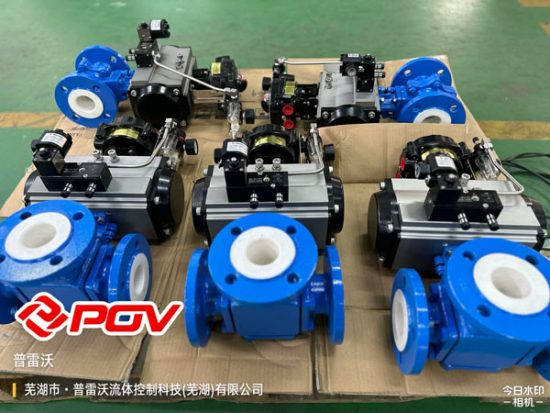
The lining, whether in a PTFE lined valve or a PFA-lined alternative. Enhances operational reliability by preventing corrosion-related damage and minimizing maintenance needs. By incorporating advanced materials like PTFE, these valves, including the versatile PTFE ball valve. Play a critical role in ensuring process efficiency, reducing system failures. And sustaining long-term performance even in the most aggressive environments. Understanding the functionality and benefits of a lined ball valve is essential for industries seeking high-quality, reliable flow control solutions.
What is a Lined Ball Valve?
A lined ball valve is a highly specialized type of valve designed to handle abrasive and corrosive substances efficiently. Unlike standard valves, a lined ball valve features a lining material that covers the internal surfaces. Providing robust protection against chemical attack and wear. The lining, often made from materials like PTFE (Polytetrafluoroethylene), ensures exceptional durability and resistance to aggressive media. Making PTFE lined ball valves a preferred choice for industries like chemical processing, pharmaceuticals, and water treatment. The core components of a lined ball valve include the valve body, a ball with a smooth lining for precise sealing,. And a durable lining layer that minimizes damage from reactive or high-pressure environments.
Whether it is a PTFE lined valve or another variant such as the PTFE ball valve. The inclusion of PTFE allows these valves to perform reliably across a wide temperature range while minimizing the risk of leaks, failures, or costly downtime. Lined ball valves are crucial for maintaining operational safety and efficiency in demanding industrial applications. Making them an indispensable solution for handling challenging flow control scenarios.
Lining Materials Used in Ball Valves
Lining materials are a critical consideration in the design and functionality of a lined ball valve. As they directly impact the valve’s ability to withstand aggressive and corrosive substances. PTFE (Polytetrafluoroethylene) is one of the most widely used materials due to its remarkable chemical resistance, non-reactive properties. And ability to perform across extreme temperature ranges. PTFE lined ball valves? specifically prefer in highly demanding sectors like chemical processing. Where exposure to harsh acids, solvents, and other corrosive substances is common.
Another popular material is PFA (Perfluoroalkoxy), which shares PTFE’s chemical resistance but offers additional benefits such as improved mechanical strength and durability under high pressures. Whether choosing a PTFE lined valve or a PFA-lined alternative, these linings create a protective barrier within the valve, preventing corrosion, reducing wear, and enhancing the lifespan of the components. The inclusion of such advanced materials in PTFE ball valves not only ensures reliable sealing and low maintenance but also minimizes the risk of leaks, downtime. Or system failures. Selecting the right lining material is as essential as the valve itself. As it directly correlates with optimal performance and longevity in industrial applications.
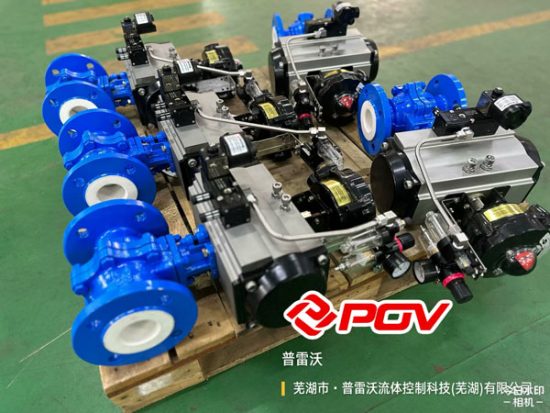
a. PTFE Lined Ball Valve
A PTFE lined ball valve is a highly effective solution for controlling the flow of aggressive or corrosive fluids in industrial processes. This type of lined ball valve features a core ball and internal surfaces coated with PTFE (Polytetrafluoroethylene),. A material well-known for its exceptional chemical resistance and non-reactive properties. PTFE lined ball valves are designed to withstand exposure to harsh media such as strong acids, alkalis, and solvents. Making them indispensable in industries like chemical manufacturing, pharmaceuticals, and wastewater management.
The PTFE lining acts as a protective barrier, not only preventing corrosion of the valve’s internal components but also significantly reducing maintenance requirements and prolonging the valve’s lifespan. PTFE lined valves and PTFE ball valves are particularly valued for their smooth operation, reliable sealing. And remarkable durability under extreme temperature and pressure conditions. These attributes make PTFE lined ball valves a top choice for industries that demand precision, safety, and performance in managing corrosive or abrasive materials.
b. PFA Lined Valve
A PFA lined ball valve is a specialized type of lined ball valve designed to deliver superior performance in harsh industrial conditions. Featuring a lining made from PFA (Perfluoroalkoxy), this innovative valve builds upon the properties of PTFE lined ball valves by offering enhanced mechanical strength and durability. PFA combines exceptional chemical resistance with the ability to withstand high temperatures and stresses. Making it an ideal choice for industries handling highly corrosive or abrasive substances. Such as in chemical processing, petrochemical plants, and semiconductor manufacturing.
Compared to standard PTFE lined valves or PTFE ball valves, PFA lined ball valves provide additional resistance to cracking under pressure. Ensuring a longer lifespan and even greater reliability in demanding applications. The lining creates a robust barrier that safeguards the valve’s internal components against wear and corrosion. Minimizing maintenance requirements while ensuring leak-free operation. With their ability to maintain integrity under extreme operating conditions. PFA lined ball valves are a critical solution for industries that prioritize efficiency, durability, and safety in their flow control systems.
Applications of Lined Ball Valves
Lined ball valves essential in a wide range of industrial applications where the handling of corrosive, abrasive, or high-temperature substances is required. These valves, including PTFE lined ball valves and PTFE lined valves, widely use in chemical processing facilities to manage the flow of aggressive chemicals, acids, and solvents. Ensuring safe and efficient operations. They are also indispensable in the pharmaceutical industry, where stringent flow control is vital for producing high-quality medicines. As the non-reactive PTFE lining prevents any contamination during the process.
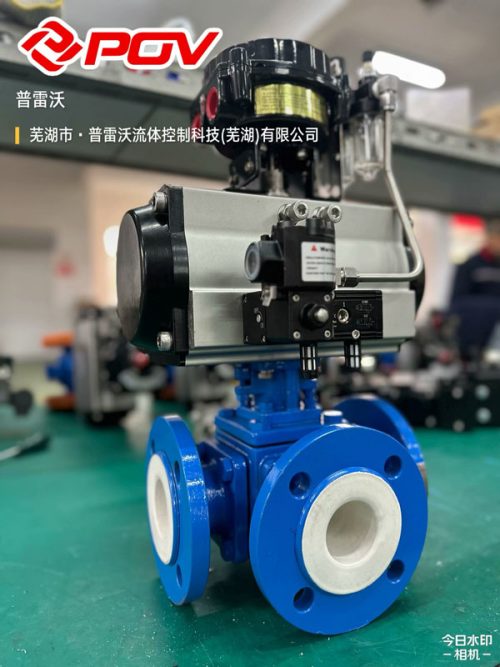
Additionally, lined ball valves extensively utilize in wastewater treatment plants to regulate the movement of harsh and abrasive sludge. Offering reliability and durability in such demanding environments. The robust construction and chemical resistance of PTFE ball valves make them suitable for petrochemicals, food and beverage production. And even semiconductor manufacturing, where precision and safety are critical. By effectively preventing corrosion, minimizing downtime, and ensuring leak-free performance. Lined ball valves have become the preferred choice for industries seeking to maintain operational integrity in highly challenging flow control scenarios.
How to Choose the Right Lined Ball Valve
Selecting the right lined ball valve is crucial for ensuring optimal performance, safety. And longevity in complex industrial applications. The first step is to evaluate the type of media being handled. Corrosive chemicals, abrasive substances, or high-purity fluids often require a PTFE lined ball valve due to its exceptional chemical resistance and non-reactive properties. For applications that demand enhanced mechanical durability under higher stress or temperature ranges. A PFA-lined option may be more appropriate. Understanding the operating temperature and pressure is also essential, as these factors directly influence the valve’s material compatibility and structural integrity.
Additionally, the specific lining material, whether PTFE lined valve or PFA lined. Must be compatible with the chemicals or compounds in use, ensuring the valve performs reliably without risk of corrosion or leakage. Selecting the right size and flow characteristics for the lined ball valve is equally important to maintain efficiency in flow control systems. Ensuring compliance with industry standards and certifications is critical. As this validates the valve’s ability to operate safely in demanding environments. By considering all these factors and collaborating with trusted manufacturers. Industries can select the perfect PTFE ball valve or lined ball valve, tailor-made to meet their unique operational needs.
Maintenance and Longevity of Lined Ball Valves
Proper maintenance is essential for ensuring the longevity and reliable performance of a lined ball valve. Including PTFE lined ball valves, PTFE lined valves, and PTFE ball valves. Routine inspection is the first line of defense against potential issues. Regularly check for signs of wear, corrosion, or deformation in the valve body, lining, and seals. Cleaning the internal surfaces of the valve is also crucial. Especially when handling chemicals or abrasive media, to prevent buildup that could compromise functionality. Always use cleaning agents that are compatible with the lining material. Such as PTFE, to avoid accidental damage.
To avoid valve failures, do not expose the valve to pressures beyond its rated capacity, as overpressure can cause cracking or deformation. Ensure that the media handled is fully compatible with the PTFE lining to prevent chemical degradation and leaks. When operating or installing a lined ball valve, handle it with care to avoid physical damage to the lining or internal components. Lubricate the moving parts as recommended by the manufacturer to preserve smooth operation and reduce wear. By adhering to these maintenance practices and collaborating with certified suppliers for replacement parts and servicing. Industries can maximize the lifespan and efficiency of their PTFE lined ball valves while ensuring safe and dependable flow control.

Advantages of Using Lined Ball Valves
Lined ball valves, including PTFE lined ball valves, PTFE lined valves, and PTFE ball valves. Offer a range of significant advantages that make them indispensable in various industries. One of their most notable benefits is their exceptional chemical resistance, making them ideal for handling corrosive and abrasive fluids in sectors like chemical processing and wastewater treatment. The PTFE lining acts as a protective barrier. Preventing the valve body from being degraded by aggressive chemicals, thus ensuring a longer operational life and reducing replacement costs.
Additionally, these valves deliver excellent leak-proof performance, thanks to their precision engineering and high-quality sealing mechanisms, which are critical for ensuring safety and environmental compliance in sensitive operations. Their durability in high-stress conditions, including exposure to extreme temperatures and pressures. Further enhances their reliability for demanding industrial applications. Beyond their robustness, lined ball valves are highly versatile, serving a wide range of purposes in pharmaceuticals, food processing, and petrochemical industries. Where precision and contamination prevention are paramount. By ensuring efficient flow control, minimizing downtime, and reducing maintenance needs. Lined ball valves not only enhance operational efficiency but also provide a cost-effective and dependable solution for managing challenging industrial processes.
FAQ
Q1. What is the warranty period for your ball valve?
Ball valve come with a standard warranty period of 12 months (1 years) from the date of delivery. This warranty covers manufacturing defects and materials under normal operating conditions as specified in the product manual.
Q2. How are? ball valve prices determined?
Prices for ball valve is influenced by several factors. Including the valve’s size, material composition (e.g., stainless steel, brass, or PVC), pressure ratings, end connection types. And any additional customisation or certifications required. Specialised features such as fire-safe designs or anti-static devices can also impact the cost.
Q3. What is the standard delivery time for a? ball valve?
Our standard delivery time for? ball valve is 4–6 weeks, depending on the order size and customisation requirements. For urgent requests, we offer expedited delivery options upon request.
Our logistics partners ensure fast and reliable delivery to meet engineering project timelines, regardless of location.

Q4. Common Applications of ball valve
Ball valve a versatile valve type design with three/two ports for fluid flow. These ports can be configured to allow various functions. Such as mixing, diverting, or completely shutting off flow.
Conclusion
A lined ball valve is an advanced flow control solution designed to handle challenging industrial conditions with precision and reliability. Featuring a resilient lining material like PTFE. Which offers exceptional chemical resistance, the lined ball valve serves as a protective barrier against corrosive and abrasive media. PTFE lined ball valves and PTFE lined valves specifically engineer to maintain durability and performance under extreme temperatures and pressures. Making them vital for industries such as chemical processing, pharmaceuticals, and wastewater treatment.
One of the key advantages of a PTFE ball valve is its leak-proof sealing capability. Which ensures safety and operational efficiency. These valves are also versatile, accommodating a wide range of fluids and gases while successfully preventing contamination. By combining strength, flexibility, and outstanding resistance to harsh substances. Lined ball valves reduce wear and tear, prolong operational life, and minimize downtime. Their design ensures cost-effectiveness and environmental compliance, helping industries achieve reliable and seamless flow control even in the most demanding applications. If durability, safety, and efficient performance are paramount, a lined ball valve stands out as an indispensable component in industrial systems, offering unmatched reliability and value.
The post What is a lined ball valve? appeared first on Control Valve Manufacturers?.
]]>The post What Quantifiable Advantages Do ptfe-Lined Diaphragm Valves Offer in Corrosive Environments? appeared first on Control Valve Manufacturers?.
]]>ptfe lined diaphragm valve Introduction
Industrial environments that handle corrosive substances demand robust, reliable equipment to maintain operational efficiency and safety. The PTFE-lined diaphragm valve stands out as a critical component in such settings, offering unmatched protection against chemical degradation. Designed with a specialized fluoropolymer lining, the PTFE-lined valve exhibits exceptional resistance to aggressive chemicals. Making it indispensable across industries such as chemical processing, wastewater treatment, and pharmaceuticals. The innovative design of these valves minimizes the risk of leaks, reduces maintenance needs. And extends the equipment’s operational life. This article examines the quantifiable advantages of PTFE-lined diaphragm valves. Exploring how they solve the challenges posed by harsh environments while ensuring seamless performance and cost savings. Whether you’re seeking to optimize your process or address current operational inefficiencies. Understanding the role of these highly engineered valves will give you a clear advantage in selecting the right solution for your needs.
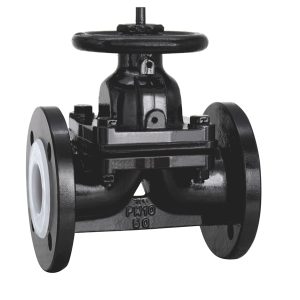
The Science Behind PTFE-Lined Diaphragm Valves
PTFE-lined diaphragm valves are at the forefront of innovation when it comes to tackling corrosive environments. The science behind these valves lies in their unique lining made from polytetrafluoroethylene (PTFE). A high-performance fluoropolymer known for its outstanding chemical resistance and non-reactive nature. This lining creates a protective barrier between the valve’s internal components and the aggressive substances being transported. Ensuring long-term durability and corrosion resistance. PTFE’s low coefficient of friction also enhances the functionality of these valves. Allowing for smoother flow control and reduced wear over time.
Unlike standard valves, a PTFE-lined diaphragm valve can withstand exposure to highly reactive chemicals. Such as acids, alkalis, and solvents, without compromising performance. This makes it not only ideal but essential in industries like chemical processing, pharmaceuticals, and water treatment, where maintaining material integrity is critical. Beyond chemical resistance, the PTFE-lined valve contributes to operational efficiency by minimizing the likelihood of leaks and the need for frequent maintenance. Ultimately reducing downtime and operational costs. By combining robust material science with precision engineering. PTFE-lined diaphragm valves provide an unparalleled solution for applications requiring extreme reliability in hostile environments.

Key Advantages of PTFE-Lined Diaphragm Valves
PTFE-lined diaphragm valves offer a range of advantages that make them indispensable in industries handling aggressive and corrosive substances. Central to their effectiveness is the PTFE lining. Which provides an exceptional barrier against chemical attack, protecting the valve’s internal components from degradation. This chemical resistance enables the PTFE-lined diaphragm valve to operate reliably in environments that involve exposure to acids, alkalis, solvents. And other reactive agents without compromising performance or safety. The durability of the PTFE-lined valve extends its service life. Reducing the frequency of replacements and maintenance, which directly translates into lower operational costs.
Additionally, the smooth surface of the PTFE lining minimizes the potential for buildup or contamination. Making these valves highly effective in applications where cleanliness and precision are essential. Such as in chemical processing or pharmaceutical production. Beyond these practical benefits, the PTFE-lined diaphragm valve also supports efficient system performance. Offering tight sealing capabilities that prevent leaks and ensure consistent flow control. This combination of robust material properties, cost-efficiency. And practical versatility positions PTFE-lined valves as a critical solution for industries requiring reliability under harsh operating conditions.

Applications of PTFE-Lined Diaphragm Valves in Corrosive Environments
PTFE-lined diaphragm valves are an essential component in industries where corrosive environments pose significant operational challenges. Thanks to the exceptional chemical resistance of their PTFE lining, these valves are widely utilized in applications that involve handling aggressive substances such as acids, alkalis, and solvents. The chemical processing industry, for example, often relies on PTFE-lined diaphragm valves to ensure safe and efficient transportation of reactive chemicals, reducing the risk of leaks or equipment failure. Similarly, in the pharmaceutical sector, these valves are critical for maintaining the purity and integrity of sensitive formulations, as the PTFE lining prevents contamination while ensuring precise flow control.
The water and wastewater treatment industry also benefits from the use of PTFE-lined valves, where they are employed to manage highly acidic or abrasive mediums during purification and disposal processes. Additional applications can be found in mining, where corrosive slurries need to be safely handled, and in power generation plants, particularly in systems dealing with harsh chemical byproducts. The versatility and reliability of the PTFE-lined diaphragm valve make it a crucial solution for any process where long-term durability, operational efficiency, and resistance to corrosive materials are non-negotiable.
Industries Benefiting from PTFE-Lined Valve
PTFE-lined valves, including PTFE-lined diaphragm valves, play a vital role in various industries, offering exceptional performance in demanding applications. The chemical processing industry benefits significantly from these valves due to their unparalleled chemical resistance, making them ideal for handling aggressive substances like acids, alkalis, and solvents without risk of corrosion or degradation. Similarly, the pharmaceutical sector relies on PTFE-lined valves for maintaining sterility and contamination-free processes, as the non-reactive nature of PTFE ensures the safe handling of high-purity substances. The food and beverage industry also leverages these valves for managing fluids and products where hygiene and chemical resistance are critical, helping adhere to stringent safety regulations.
Water treatment facilities utilize PTFE-lined valves to manage corrosive chemicals like chlorine and other agents used in disinfection and purification processes, enhancing operational reliability. Additionally, in the oil and gas sector, PTFE-lined diaphragm valves are valued for their ability to withstand harsh environments, including exposure to corrosive hydrocarbons and extreme temperatures. Across all these industries, the durability, non-stick properties, and adaptability of PTFE-lined valves make them indispensable for ensuring both efficiency and safety in highly specialized operations. Their versatility cements their position as a practical solution for a wide range of industrial challenges.
Teflon Valves and Their Place in the Market
Teflon valves, particularly PTFE-lined diaphragm valves, have solidified their place in the industrial market as a superior solution for handling aggressive and corrosive substances. The defining feature of these valves is their PTFE lining, which leverages the exceptional chemical resistance and non-stick properties of polytetrafluoroethylene to ensure durability and reliability even in the harshest environments. This characteristic distinguishes Teflon valves from conventional options, as they can withstand prolonged exposure to acids, alkalis, solvents, and other reactive chemicals without degradation.

PTFE-lined diaphragm valves, in particular, are widely regarded for their precision flow control and tight sealing capabilities, making them indispensable in industries such as chemical processing, pharmaceuticals, and wastewater treatment. Additionally, their low maintenance requirements and extended lifespan enhance their cost-effectiveness, positioning them as a preferred choice for sectors aiming to minimize downtime and operational expenses. As industries continue to prioritize efficiency, safety, and environmental compliance, the demand for PTFE-lined valves continues to grow, ensuring their role as a vital component in modern industrial operations. Their ability to combine advanced material science with practical functionality solidifies their competitive advantage in a market that values both performance and reliability.
How to Choose the Right PTFE-Lined Valve for Your Application
Selecting the right PTFE-lined valve, including PTFE-lined diaphragm valves, is critical to achieving reliable performance and operational efficiency in demanding environments. The process begins with evaluating the chemical compatibility of the valve’s PTFE lining with the substances it will handle. PTFE, known for its resistance to aggressive chemicals such as acids, alkalis, and organic solvents, must still be carefully matched to the specific compounds and concentrations used in your application to ensure optimal durability. Beyond chemical resistance, it’s equally important to consider operating conditions such as temperature, pressure, and flow rate.
PTFE-lined diaphragm valves, for instance, particularly well-suit for applications requiring precise flow control and exceptional sealing at variable pressures. Their non-stick properties also help reduce buildup, ensuring reliable performance over time. Understanding the unique requirements of your industry is another essential step. For example, clean processing industries like pharmaceuticals or food production may prioritize contamination prevention. While wastewater treatment facilities focus on handling abrasive media. Additionally, consider the total cost of ownership by factoring in the frequency of maintenance. The expected lifespan of the valve, and overall system compatibility. By aligning these criteria with your operational demands. You can confidently select a PTFE-lined valve solution tailored to your application, enhancing both safety and efficiency.

FAQ ?
Q1. What is the difference between a PTFE valve and a PFA valve?
PTFE valves and PFA valves, while similar in their exceptional chemical resistance and use in harsh industrial environments. Differ in material properties and specific applications. PTFE (Polytetrafluoroethylene) a fluoropolymer know for its non-reactivity, high temperature tolerance, and excellent resistance to a wide range of chemicals. Making PTFE valves ideal for environments involving strong acids, alkalis, and solvents.
Q2. How do I maintain PTFE-lined valves?
1.Regular Inspection
2.Cleaning and Handling
3. Operational Precautions
4. Early Problem Detection
5. Maintenance Schedule
6. Replacement Parts
Q3. Can PTFE-lined diaphragm valves handle high temperatures?
PTFE-lined diaphragm valves can handle high temperatures, but their performance gover by the intrinsic properties of PTFE. Polytetrafluoroethylene (PTFE) boasts impressive thermal stability, with operational limits typically up to 260°C (500°F), making it suitable for many high-temperature applications.
Conclusion
PTFE-lined diaphragm valve, along with PTFE-lined valves, PFA valves, and Teflon valves, stand out as essential solutions for managing corrosive environments. These valves leverage the remarkable chemical resistance of their linings to provide reliable longevity. Even when exposed to aggressive substances such as acids, alkalis, and solvents. The PTFE-lined diaphragm valve excels in offering tight sealing and precise flow control. Making it ideal for applications requiring accuracy and resilience under demanding conditions. Similarly, PFA valves provide an added layer of durability by combining the benefits of PTFE with enhanced mechanical strength. Allowing for efficient handling of abrasive media.
The versatility of these valves extends across industries like chemical processing, pharmaceuticals, and wastewater treatment. Where operational reliability is critical. Cost-effectiveness is another key advantage. As their low maintenance requirements and resistance to wear and tear reduce operating expenses and downtime. From the advanced engineering of the Teflon valve to the performance-focused design of the PTFE-lined valve. These products continue to address industrial challenges with precision and efficiency. By offering unparalleled durability and safety in corrosive environments. They remain an invaluable resource for industries aiming to optimize processes and maintain environmental compliance.
The post What Quantifiable Advantages Do ptfe-Lined Diaphragm Valves Offer in Corrosive Environments? appeared first on Control Valve Manufacturers?.
]]>The post Why Are Y Type Ball Valves Critical for Powder Industry Applications? appeared first on Control Valve Manufacturers?.
]]>Additionally, the 3 way stainless steel ball valve, with its superior strength and corrosion resistance. Is ideal for high-performance and contamination-free applications, especially in pharmaceuticals and food-grade powders. Selecting the right valve, tailored to specific operational requirements, is crucial for maintaining safety, reducing downtime. And achieving consistent results in powder handling systems.
Y Type Ball Valve Introduction
The powder industry operates under complex conditions. Requiring equipment that ensures precise material flow, durability, and safety in every application. Among the crucial components of such systems, the Y Type Ball Valve stands out as an indispensable solution. These valves are specifically engineered to manage abrasive or fine powder materials while minimizing clogging and wear. Making them ideal for dense and high-demand processes.

With the growing integration of automation, options like the 3 way actuated ball valve, electric three way valve, and pneumatic three way valve further enhance functionality by delivering accurate flow control and operational reliability. Additionally, the 3 way stainless steel ball valve offers exceptional strength and corrosion resistance. Making it the preferred choice for industries handling sensitive products, such as pharmaceuticals and food-grade powders. The ability of these valves to optimize efficiency, reduce downtime. And maintain safety under vigorous operating environments underscores their critical role in advancing powder handling technologies.
?Understanding Y Type Ball Valves
Y Type Ball Valves are a vital component in industrial systems. Engineered to deliver exceptional performance and reliability across a wide range of applications. Including the demanding powder industry. These valves feature a unique angled design that optimizes flow rates while significantly reducing the risk of clogging. Especially when handling fine or abrasive powders. The high wear resistance and durability of the Y Type Ball Valve make it particularly effective for challenging environments where consistent performance is crucial. When paired with automation systems, variations such as the 3 way actuated ball valve. Electric three way valve, and pneumatic three way valve bring added precision and adaptability. Enabling operators to customize flow control based on specific operational demands.
Additionally, materials like stainless steel, found in the 3 way stainless steel ball valve. Provide enhanced corrosion resistance and structural integrity, ensuring suitability for industries that prioritize sanitation. Such as pharmaceuticals and food processing. Compared to conventional valve types, Y Type Ball Valves stand out for their capacity to maintain uniform flow, minimize downtime. And improve overall process efficiency. Making them an invaluable choice across many industrial applications.
Why Y Type Ball Valves are Critical for the Powder Industry
Powder industry operations face a unique set of challenges. Including abrasive materials, clogging, and the need for precise, contamination-free flow management. The Y Type Ball Valve addresses these issues with its angled design. Which promotes efficient material flow while reducing the likelihood of blockages. Its durability and wear resistance make it suitable for handling dense powders under high-pressure conditions. Automation options. Such as the 3 way actuated ball valve, electric three way valve, and pneumatic three way valve. Enhance its functionality by enabling responsive and accurate flow control, even in complex processing systems.
The 3 way stainless steel ball valve, in particular, combines strength and corrosion resistance. Making it ideal for environments where hygiene and material integrity are paramount, such as food processing and pharmaceutical production. By minimizing downtime, maintaining operational safety, and improving system efficiency. Y Type Ball Valves become an essential component in overcoming the powder industry’s operational demands and maintaining consistent, high-quality outcomes.

The Role of Valve Automation in the Powder Industry
Automation plays a transformative role in the powder industry. Optimizing processes that demand precise and reliable flow control. Valves equipped with automated systems. Such as the 3 way actuated ball valve, electric three way valve, and pneumatic three way valve, bring a new level of intelligence and responsiveness to handling bulk powders. By integrating these systems with Y Type Ball Valves, operators can enhance efficiency by automating complex operations like switching flow paths, managing pressure. Or adjusting flow rates in real time. The angled design of Y Type Ball Valves prevents clogging and ensures consistent material flow. While automation reduces manual intervention and operational downtime.
For industries where cleanliness and durability are critical. Options like the 3 way stainless steel ball valve ensure corrosion resistance and sanitation. Making them ideal for sensitive applications such as pharmaceuticals and food-grade processing. Ultimately, the combination of Y Type Ball Valves with advanced automation technologies supports precise, adaptable. And efficient powder processing, ensuring both productivity and safety in demanding industrial environments.
3 Way Actuated Ball Valve
The 3 Way Actuated Ball Valve is a critical component in modern industrial automation. Known for its ability to efficiently manage complex flow paths in a seamless and controlled manner. This valve features three ports, which allow for flow diversion, mixing, or shutoff operations. Making it highly versatile for industries such as chemical processing, pharmaceuticals, and food and beverage production. By integrating an actuator, the 3 Way Ball Valve achieves exceptional operational precision. Enabling automated control with minimal manual intervention. Whether pneumatic or electric, actuators enhance system responsiveness, streamlining processes even in high-demand environments.
These valves specifically design to handle various media, from liquids and gases to slurries. Ensuring adaptability across a multitude of applications. Furthermore, their ability to withstand high-pressure conditions and resist wear and corrosion extends their durability and reliability in challenging operating scenarios. The use of robust materials, such as stainless steel, further supports their longevity and compliance with stringent hygiene requirements. Overall, the 3 Way Actuated Ball Valve embodies efficiency and adaptability. Offering industries a dependable solution for optimizing flow control, reducing downtime. And ultimately enhancing productivity in diverse operational frameworks.

Material Considerations for Y Type Ball Valves
Material selection plays a pivotal role in the performance and longevity of Y Type Ball Valves. Particularly in demanding industrial environments like the powder industry. The choice of materials directly impacts a valve’s ability to withstand abrasive particles, high pressures, and harsh operating conditions. For instance, corrosion-resistant options such as the 3 way stainless steel ball valve are widely used in industries requiring hygiene and chemical integrity. Including pharmaceutical and food-grade applications.
Meanwhile, high-strength alloys enhance durability. Making these valves capable of handling the wear caused by dense, fast-moving powders. Integrating automation features like the 3 way actuated ball valve, electric three way valve, or pneumatic three way valve further underscores the significance of material suitability because these enhancements demand a robust structure to support precise and responsive operation under continuous stress. By prioritizing materials that balance strength, wear resistance, and corrosion protection, manufacturers ensure that Y Type Ball Valves deliver reliable performance and maintain safety across diverse industrial sectors. This thoughtful material selection not only maximizes efficiency but also reduces downtime and maintenance costs. Providing a long-term solution for optimal powder handling systems.
Selecting the Right Valve for Powder Industry Applications
Selecting the right valve for powder industry applications requires careful evaluation of various factors to ensure optimal performance, safety, and efficiency. The Y Type Ball Valve is an excellent choice for tackling the unique challenges of handling abrasive and dense powders, thanks to its angled design. Which minimizes clogging and promotes smooth material flow. Equally important is material compatibility; for instance, the 3 way stainless steel ball valve offers excellent resistance to corrosion and wear. Making it ideal for applications that demand hygiene and durability, such as in food or pharmaceutical processing.
Automation needs, such as whether to use a 3 way actuated ball valve, electric three way valve, or pneumatic three way valve. Should also factor in based on the requirements for speed, precision, and system integration. Electric and pneumatic options provide distinct advantages for adaptability in automated systems. Streamlining processes and minimizing manual oversight. Additionally, operational efficiency is critical, with valves that can reduce downtime and withstand high-pressure conditions being prioritized. Ultimately, selecting the right valve involves a strategic balance of these considerations to meet the severe demands of the powder industry while ensuring reliable and cost-effective operations.

FAQ ?
What makes Y-type ball valves suitable for the powder industry?
Y-type 135 ball valve are specifically designed to handle the unique challenges of powder materials. They offer a streamlined flow path that reduces obstruction and build-up, ensuring smooth handling of powders like fine chemicals, granules, or abrasive materials without clogging or system disruptions.
How do Y-type ball valves ensure efficiency in powder processing?
These valves feature an angled Y-shape design that allows for smooth diversion or mixing of powder flows. This reduces flow resistance, minimizes energy consumption, and prevents blockages, which are common in traditional valve designs. Their accurate control capabilities make them essential for maintaining consistent system performance.
What are the key benefits of using Y-type ball valves in powder applications?
Benefits include minimal powder leakage due to excellent sealing properties, reduced downtime thanks to their robust construction, and easy maintenance. They are also abrasion-resistant, making them ideal for handling rough powders without wearing down quickly.
Can Y-type ball valves handle abrasive powders?
Yes, they are built to withstand wear and tear caused by abrasive powders. Many Y-type valves are made from durable materials such as stainless steel or come with specialized coatings to enhance resistance to abrasion, ensuring longevity and reliability in tough applications.

Y Type Ball Valve Conclusion
Y Type Ball Valves are indispensable in the powder industry due to their ability to address the unique challenges of handling abrasive, dense materials while ensuring smooth, consistent flow. Their angled design reduces clogging and promotes operational efficiency, making them ideal for demanding environments. When paired with advanced automation technologies, such as the 3 way actuated ball valve, electric three way valve, or pneumatic three way valve, these valves enhance precision, reduce manual intervention, and provide real-time adaptability. Materials like stainless steel, used in the 3 way stainless steel ball valve, further elevate durability and corrosion resistance, meeting hygiene requirements critical for industries like pharmaceuticals and food processing.
The combination of robust material selection, streamlined flow control, and intelligent automation ensures that Y Type Ball Valves remain vital for maintaining system reliability, operational safety, and cost efficiency. By integrating these superior valves into powder handling systems, industries benefit from reduced maintenance downtime, improved productivity, and a more sustainable operation. This makes Y Type Ball Valves a strategic investment for tackling the multi-faceted demands of the powder industry.
The post Why Are Y Type Ball Valves Critical for Powder Industry Applications? appeared first on Control Valve Manufacturers?.
]]>The post Application of Y-type three-way ball valve in powder industry appeared first on Control Valve Manufacturers?.
]]>Y-type three-way ball valves streamline industrial processes by offering increased flexibility and control. Whether used for dosing, mixing, or transfer of materials. These 3 way valves contribute to cost-effective, optimized operations in the powder industry. Their reliable performance underscores their suitability for businesses focused on maintaining high-quality standards while maximizing operational efficiency.
3-way ball valve Introduction
Three-way ball valves are versatile and indispensable components in modern industrial systems. Designed to manage and control the flow of liquids, gases, or granular materials with exceptional precision. A 3-way ball valve stands out for its ability to streamline complex flow processes by directing media through three connected ports. Offering unparalleled flexibility. The design of a 3 way valve typically includes options such as L-port or T-port configurations. With the three way ball valve t port being particularly significant for applications requiring simultaneous distribution or mixing of flow paths.

These valves widely value across industries like chemical processing, oil and gas, food production, and the powder industry. Where efficiency, durability, and adaptability are crucial. Built with robust materials and engineered to handle demanding conditions. 3-way ball valves provide reliable performance even under high-pressure or abrasive environments. Their ability to simplify system designs while reducing maintenance costs makes them a preferred choice for industrial professionals aiming to optimize operations and uphold stringent quality standards.
Understanding Y-type 3-Way Ball Valve
Y-type three-way ball valves highly specialize components designed to optimize flow control in complex industrial applications. Unlike standard 3-way ball valves, the Y-type configuration engineer to handle challenging flow requirements with its distinctive shape. Which promotes smooth transitions and minimizes resistance. A 3 three way ball valve in this setup is particularly advantageous for industries dealing with granular or powder materials. As it effectively reduces risks of clogging or wear. The key feature of Y-type valves is their ability to manage multiple flow paths simultaneously. With the three way ball valve t port configuration standing out for its capability to efficiently divert or mix media between ports. This design simplifies piping systems, eliminates the need for additional equipment, and enhances overall system reliability.
Whether it’s a 3 way valve deployed for dosing, blending, or redirection processes. Y-type three-way ball valves deliver precision and efficiency critical to industries such as chemical processing, pharmaceuticals, and powder handling. Their robust construction, combined with their adaptability to high-pressure and abrasive environments. Makes them an essential solution for streamlining operations and reducing maintenance downtime in demanding industrial scenarios.
Significance of 3-Way Ball Valves in the Powder Industry
Three-way ball valves play a critical role in optimizing efficiency and reliability in the powder industry. These valves, specifically the 3 three way ball valve. engineer to handle complex flow requirements with precision. Making them indispensable for industries managing the movement, dosing, and blending of powders. A 3 way valve allows for seamless direction of material across three ports, significantly reducing downtime and preventing blockages that often occur with traditional valve systems. The three way ball valve t port configuration is particularly noteworthy for its ability to either mix or divert flow paths. Providing flexibility in applications that demand consistent and controlled material handling.
These valves construct to withstand abrasive conditions and high pressures. Ensuring longevity and reducing maintenance needs. Which is vital in high-demand environments. By streamlining processes and supporting seamless material movement. Three-way ball valves enable industries to maintain product quality. Minimize operational costs, and meet stringent efficiency standards. Solidifying their importance in modern powder handling systems.

Technical Advantages of Y-type Three-Way Ball Valve for the Powder Industry
Y-type three-way ball valves purposefully engineer to deliver superior performance in the demanding conditions of the powder industry. Addressing key technical challenges with efficiency and reliability. Unlike standard 3-way ball valves, Y-type designs feature a specialized angled body that promotes smoother flow paths. Drastically reducing the risk of clogging or material buildup. Which are common issues when handling fine or granular powders. A 3 three way ball valve in this configuration is particularly suited for applications that require precise flow direction. Enabling seamless control between three ports. The versatility of these valves enhance by the availability of configurations such as the highly efficient three way ball valve t port. Which facilitates simultaneous mixing or diversion of media.
Built with robust materials to withstand high pressures, abrasive environments, and rigorous operational cycles. These valves ensure long-lasting performance and minimal maintenance requirements. Their ability to streamline piping systems, optimize material movement. And improve process control makes the Y-type 3 way valve a critical component for industries looking to maintain quality standards while maximizing throughput. By integrating Y-type three-way ball valves, powder industry operations can significantly enhance their overall efficiency and reduce the operational downtime associated with traditional valve systems.
Comparing Y-type Three-Way Ball Valves to Other Valve Designs
Y-type three-way ball valves stand out in the valve industry for their unique design and tailored functionality. Particularly when compared to conventional valve systems. Unlike standard 3-way ball valves, the Y-type configuration incorporates an angled body that streamlines material flow and minimizes pressure loss. Making it an ideal solution for applications within the powder industry. These valves effectively address common challenges such as clogging, abrasion, and material buildup. Which can impede the performance of other valve types. The versatility of the 3 three way ball valve is further demonstrated by options like the three way ball valve t port. Which enables precise flow control by allowing diversion or mixing of media between ports. When comparing to traditional valves like gate or butterfly designs, Y-type three-way ball valves provide superior durability and longer service life. Thanks to their robust construction that withstands high-pressure environments and abrasive materials.
Additionally, their ability to handle complex flow requirements reduces the need for multiple valves in a system. Streamlining operations and lowering maintenance costs. For industries relying on efficient and reliable flow management systems. Such as the powder industry, the Y-type 3 way valve offers unmatched performance, proving to be a highly advantageous alternative to other valve designs.
Best Practices for Implementation and Maintenance
Proper implementation and regular maintenance are critical for achieving the optimal performance and longevity of a 3-way ball valve in industrial applications. To begin with, the installation process must ensure that the valv align correctly with the system’s flow paths and configured precisely according to operational needs. Whether it’s a standard 3 three way ball valve or a specialized version like the three way ball valve t port. This is essential to prevent unnecessary strain on the valve or associated piping. Attention should also be given to selecting the right materials and coatings to withstand the specific media and operating conditions. Such as high-pressure or abrasive environments.
Once installed, regular maintenance, including periodic inspections for wear, leaks, or material buildup, is necessary to detect and correct potential issues before they escalate. For example, cleaning the internal components of the 3 way valve and ensuring the ball, seats. And seals remain in excellent condition can significantly reduce downtime and maintain consistent flow control. Lubrication of the moving parts should also be performed as part of scheduled maintenance to avoid operational issues caused by friction. Additionally, ensuring that the three way ball valve t port or other configurations are adjusted correctly to meet changing system requirements can help optimize performance and process efficiency. By adhering to these best practices for implementation and maintenance. Industries can ensure the reliable operation of their valve systems, lower operational costs, and extend the service life of their equipment.

FAQ
What is a Y-type three-way ball valve, and how is it used in the powder industry?
A Y-type three-way ball valve is a specialized valve designed for routing, distributing, or combining flow streams in industrial processes. In the powder industry, it is utilized to control the direction of solids flow, ensuring smooth and precise distribution between different conveying lines or process stages.
What are the key benefits of using Y-type three-way ball valves in powder applications?
These valves offer several advantages for the powder industry, including minimal flow resistance, excellent sealing capabilities to prevent powder leakage, and high durability to handle abrasive materials. Their three-way design allows efficient diversion or mixing, making them ideal for complex flow control in bulk material handling.
What types of powders can Y-type three-way ball valves handle?
They are capable of handling a wide range of powders, including fine chemicals, cementitious materials, plastic granules, and food-grade powders like flour or sugar. Their robust design ensures reliable operation even with abrasive or high-density materials.
How does a Y-type configuration improve efficiency in powder handling systems?
The Y-type design ensures a streamlined flow path that minimizes powder build-up inside the valve. This reduces clogging risks and maintains system efficiency even in continuous operations. The three-way function enables quick redirection between processing lines without needing multiple valves, saving time and space.
Are Y-type three-way ball valves easy to clean and maintain in the powder industry?
Yes, they are designed with ease of maintenance in mind. Features like full-bore flow paths and minimal internal cavities prevent powder residues from accumulating, which simplifies cleaning. Additionally, their modular construction often allows quick disassembly for routine inspections or part replacements.

Q1. What is the warranty period for your three-way ball valve?
3 way ball valve come with a standard warranty period of 12 months (1 years) from the date of delivery. This warranty covers manufacturing
3-way ball valve Conclusion
The Y-type three-way ball valve has proven to be a vital component in the powder industry, where efficiency and reliability are paramount. Unlike conventional valve designs, the Y-type configuration minimizes clogging and material buildup, ensuring smooth and uninterrupted flow even with fine or abrasive powders. Its robust construction and precise engineering make it ideal for handling high-pressure applications and demanding operational cycles, providing a level of durability that other valve designs often fail to match.
By incorporating the flexibility of a 3-way ball valve or a 3 three way ball valve into operations, industries can optimize flow pathways while reducing the need for multiple valves or complex piping systems. This not only streamlines operations but also lowers maintenance costs, as these valves are designed for minimal wear and long-term performance. Furthermore, their ability to handle complex flow requirements makes them indispensable for improving process efficiency and maintaining product quality. The Y-type 3 way valve’s technical advantages ensure that powder industry applications operate with enhanced precision and reduced downtime, solidifying its role as a critical tool for industrial excellence.
The post Application of Y-type three-way ball valve in powder industry appeared first on Control Valve Manufacturers?.
]]>The post How Do pfe-Lined Diaphragm Valves Optimize Performance in the Chemical Industry? appeared first on Control Valve Manufacturers?.
]]>For industries handling harsh chemicals like acids, solvents, and alkalis, options such as PTFE lined valves, PFA valves, and Teflon valves provide optimal solutions for safe and efficient processes. Their ability to meet stringent industry standards ensures compliance and operational safety while reducing maintenance costs. Applications span across petrochemical, pharmaceutical, and water treatment sectors, highlighting their versatility.

Introduction
The chemical industry operates under some of the most challenging conditions, requiring equipment that can withstand high pressures, extreme temperatures, and exposure to aggressive chemicals. Advanced valve technology is at the heart of maintaining safety, efficiency, and precision in these demanding environments. Among the key innovations are PFE-lined diaphragm valves, which offer exceptional durability and reliability. These valves, designed with a protective PFE lining, excel in resisting corrosion and chemical attack, making them an essential solution for managing highly reactive substances.
Similar technologies, including PTFE lined valves, PFA valves, and PTFE valves, further enhance the flexibility and safety of industrial operations. Known for their robust performance, Teflon valves provide superior flow control and minimal leakage in processes involving corrosive acids, solvents, and alkalis. The importance of PTFE valves lies not only in their chemical resistance but also in their ability to reduce maintenance and ensure compliance with stringent industry standards. Understanding how these advanced valves optimize performance can help chemical processors achieve greater system reliability, reduce downtime, and improve overall productivity.
Section 1: What Are PFE-Lined Diaphragm Valves?
PFE-lined diaphragm valves are a specialized type of industrial valve designed to handle highly corrosive and demanding chemical processes with exceptional efficiency. Constructed with a diaphragm mechanism and a protective PFE (Perfluoroethylene) lining. These valves provide superior resistance to aggressive chemicals and extreme temperatures. The PFE lining acts as a barrier, preventing the valve’s internal components from coming into direct contact with harmful substances. Extending its lifespan and ensuring consistent performance.
Similar technologies like PTFE lined valves, PFA valves, and Teflon valves share this focus on chemical resistance, utilizing materials such as PTFE (Polytetrafluoroethylene) to enhance durability, reduce maintenance needs, and improve operational safety. PTFE valves, in particular, are renowned for their low friction, excellent sealing properties. And ability to maintain precise flow control in industries dealing with substances like acids, alkalis, and solvents. PFE-lined diaphragm valves excel in applications where reliability, compliance with industry standards, and minimal risk of leakage are critical. Making them a go-to solution for chemical processors aiming to optimize their systems with advanced, high-performance valve technology.
Section 2: Why PFE Lining Is Crucial in the Chemical Industry
PFE lining plays a pivotal role in ensuring safety, efficiency, and reliability in the chemical industry. Where processes often involve highly corrosive and aggressive substances. A PFE lining, commonly used in products like PFE lined diaphragm valves, acts as a protective shield against the damaging effects of chemicals. Extending the lifespan and functionality of industrial valves. This lining prevents corrosion, degradation, and material wear. Ensuring the smooth operation of systems handling acids, alkalis, and solvents.
Valves such as PTFE lined valves, PFA valves, and PTFE valves benefit from the unique properties of PFE. Including its exceptional resistance to extreme temperatures and its non-reactive nature. Teflon valves, known for their low friction and secure sealing, leverage PFE and PTFE to minimize leakage and enhance chemical compatibility. Making them ideal for the most demanding processing environments. By incorporating PFE linings, companies in the chemical sector can mitigate risks, maintain compliance with stringent industry standards, and maximize efficiency, significantly reducing downtime and operating costs. This level of protection is crucial not only for the safety of workers but also for the integrity of critical systems in industries that push materials to their limits daily.
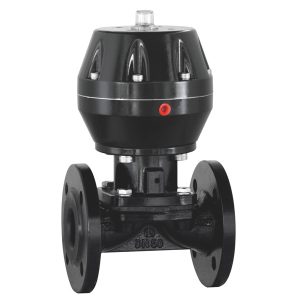
Section 3: Key Benefits of PFE-Lined Diaphragm Valves for the Chemical Industry
PFE-lined diaphragm valves offer a wide range of advantages that make them indispensable in the chemical industry. Wwhere equipment is routinely exposed to hazardous and corrosive substances. One of the most notable benefits of these valves is their exceptional chemical resistance. Which is attributed to the PFE lining that acts as a robust shield against aggressive acids, alkalis, and solvents. This feature not only extends the lifespan of the valve but also minimizes maintenance costs. As the PFE lining prevents corrosion and material degradation. Similarly, PTFE lined valves and PFA valves share this characteristic, offering unmatched durability and reliability in harsh operating environments.
Safety is another critical factor, with Teflon valves and PTFE valves ensuring a secure sealing mechanism that reduces the risk of leaks. Protecting both the process and personnel. Efficiency is further enhanced, as these advanced valves enable precise flow control and consistent performance even under extreme temperature and pressure conditions. By incorporating PFE-lined diaphragm valves into their systems, chemical processors can achieve greater reliability, reduced downtime, and compliance with stringent industry standards. Making these valves an essential component for optimizing modern chemical operations.
Section 4: Applications of PFE-Lined Diaphragm Valves in the Chemical Industry
PFE-lined diaphragm valves are a cornerstone of advanced fluid handling systems within the chemical industry. Thanks to their unmatched versatility, reliability, and ability to perform under extreme conditions. Designed specifically for demanding applications, these valves excel in handling highly corrosive and hazardous materials. Making them a trusted choice for industries processing aggressive chemicals such as acids, solvents, and alkalis. A PFE lined diaphragm valve incorporates a high-performance lining that provides robust protection against chemical attack, greatly increasing the valve’s lifespan and reducing the need for frequent maintenance. PTFE lined valves and PFA valves are other excellent examples of this technology. Offering superior resistance to chemical reactions, which ensures both operational safety and product integrity.

Similarly, Teflon valves, leveraging the unique properties of PTFE and PFA. Provide exceptional sealing capabilities and low-friction operation, enhancing efficiency and minimizing leakage even in highly pressurized systems. PTFE valves, specifically engineered for critical processes, further contribute to maximizing reliability by maintaining consistent performance in extreme temperature and pressure conditions. Across the chemical industry, these valves are instrumental in applications such as chemical synthesis, wastewater management, and the safe transport of volatile substances. By integrating PFE-lined diaphragm valves into their operations. Chemical processors not only comply with stringent safety and environmental regulations but also achieve greater system efficiency, reduced downtime, and lower overall operational costs.
Section 5: Choosing the Right PFE-Lined Diaphragm Valve for Your Needs
Selecting the right PFE-lined diaphragm valve for your needs requires careful evaluation of several critical factors to ensure optimal performance and longevity. One of the foremost considerations is chemical compatibility, as the valve’s lining must withstand the specific corrosive or reactive fluids being processed. A PFE lined diaphragm valve, with its robust lining, offers excellent resistance to aggressive chemicals like acids, alkalis, and solvents, making it ideal for demanding applications.
Additionally, PTFE lined valves and PFA valves provide similar advantages, ensuring durability and preventing material degradation in extreme chemical environments. Matching the valve to operating conditions such as temperature, pressure, and flow requirements is equally important. For instance, Teflon valves, composed of PTFE or PFA, exhibit outstanding thermal stability and low friction properties, making them suitable for high-pressure and high-temperature systems. The intended application also plays a role in the decision-making process; PTFE valves excel in precision flow control, making them a preferred choice in processes requiring consistent and reliable performance, such as chemical synthesis or wastewater treatment. By considering these factors and consulting with experts, you can identify a valve that aligns with your operational goals, minimizes maintenance costs, and ensures compliance with safety and quality standards, ultimately enhancing efficiency across your chemical processes.
Section 6: How PFE-Lined Diaphragm Valves Optimize Efficiency and Safety
PFE-lined diaphragm valves are essential for enhancing both efficiency and safety in the chemical industry, where processes often involve aggressive, high-risk substances. These valves specifically design to handle challenging operating environments, thanks to their exceptional chemical resistance. The specialized PFE lining acts as a protective barrier, safeguarding the valve’s internal components from corrosive substances like acids, alkalis, and solvents. This not only extends the lifespan of equipment but also reduces the frequency of repairs and replacements, thereby optimizing operational efficiency.
PTFE lined valves and PFA valves share similar benefits, making them reliable options for maintaining the long-term integrity of fluid handling systems. Equally, Teflon valves offer superior sealing performance, effectively preventing leaks that could lead to hazardous chemical exposure or environmental contamination. PTFE valves are particularly valued for their ability to maintain consistent operations in systems with extreme temperature and pressure variations, ensuring smooth, uninterrupted processes. By minimizing risks of failure and contamination and enhancing system reliability, PFE-lined diaphragm valves elevate the overall safety standards while streamlining operations, making them an indispensable component in modern chemical processing facilities.
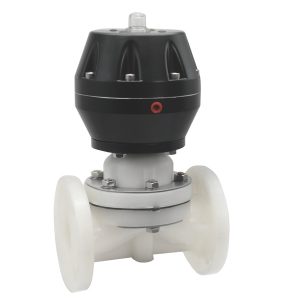
FAQ
Q1. What is the warranty period for your?diaphragm?valve?
Diaphragm valve come with a standard warranty period of 12 months (1 years) from the date of delivery. This warranty covers manufacturing defects and materials under normal operating conditions as specified in the product manual.
Q2. How are pfe lined diaphragm valve prices determined?
Diaphragm valve is influenced by several factors. Including the valve’s size, material composition (e.g., stainless steel, brass, or PVC), pressure ratings, end connection types. And any additional customisation or certifications required. Specialised features such as fire-safe designs or anti-static devices can also impact the cost.
Q3. What is the standard delivery time for a diaphragm valve?
Our standard delivery time for diaphragm valve is 4–6 weeks, depending on the order size and customisation requirements. For urgent requests, we offer expedited delivery options upon request.
Our logistics partners ensure fast and reliable delivery to meet engineering project timelines, regardless of location.
Q4. Common Applications of? diaphragm valve
Diaphragm valve is a versatile valve type designed with three ports for fluid flow. These ports can configure to allow various functions. Such as mixing, diverting, or completely shutting off flow. Many three-way ball valves feature an L-port or T-port design. Which determines how the flow paths are arranged and controlled.
pfe lined diaphragm valve Conclusion
PFE-lined diaphragm valve is critical to optimizing the performance of chemical industry operations by providing superior efficiency, safety, and durability. Their advanced PFE lining ensures exceptional resistance to corrosive substances like acids, alkalis, and solvents, which are prevalent in chemical processes. This unmatched chemical compatibility reduces equipment wear, minimizes maintenance needs, and enhances the lifespan of critical components, thus improving overall system efficiency. PTFE lined valves and PFA valves further bolster performance with their ability to handle extreme operating conditions.Including high temperatures and pressures, ensuring seamless and reliable operation. Teflon valves, known for their tight sealing capabilities, effectively prevent leaks.
Minimizing the risks of hazardous chemical exposure and environmental damage. PTFE valves, in particular, deliver consistent control and adaptability for precision-driven processes like chemical synthesis and fluid transport. By integrating these innovative valve solutions. Chemical processing plants achieve greater operational stability. Comply with stringent environmental and safety standards, and reduce unplanned downtime. Ultimately, PFE-lined diaphragm valves and their variants represent a vital investment in modern chemical industry operations. Streamlining performance while upholding the highest safety and quality measures.
The post How Do pfe-Lined Diaphragm Valves Optimize Performance in the Chemical Industry? appeared first on Control Valve Manufacturers?.
]]>The post What is PTFE lined valve? appeared first on Control Valve Manufacturers?.
]]>ptfe lined valve Introduction
A PTFE lined valve is a specialized industrial valve designed to handle aggressive chemicals, extreme temperatures, and demanding operational conditions. Lined with PTFE, or Polytetrafluoroethylene, these valves offer exceptional chemical resistance, non-stick properties, and durability. Making them an indispensable component in industries such as chemical processing, pharmaceuticals, and food manufacturing. The PTFE lining acts as a robust barrier, protecting the valve’s internal surfaces from corrosion and wear while ensuring reliable performance under high-pressure or high-temperature scenarios.
Variants such as PFA valve and PTFE valve expand the range of applications. With PFA (Perfluoroalkoxy) offering enhanced mechanical strength in certain environments. Often referred to as Teflon valves, due to Dupont’s popularized name for PTFE, these valves stand out for their ability to prevent leaks and ensure consistent flow control. Whether it’s for ensuring safety, improving efficiency, or reducing maintenance costs. PTFE valves have become a trusted choice for industries requiring robust and reliable solutions for handling aggressive media. Their precision and design make them not only a technical asset but also a cost-efficient investment in operational excellence.

Section 1: What is a PTFE Lined Valve?
A PTFE lined valve is an industrial valve engineered with an internal lining made of PTFE (Polytetrafluoroethylene), a highly durable, chemically resistant material. The lining creates a protective barrier between the valve’s metal components and the corrosive or abrasive media it handles. Ensuring long-term reliability and extending the valve’s lifespan. PTFE lined valves commonly use in industries like chemical processing, pharmaceuticals, and food manufacturing. Where they manage aggressive chemicals, high temperatures, and demanding operational conditions.
Variants such as PFA valve and PTFE valve provide additional options. With PFA (Perfluoroalkoxy) offering enhanced flexibility and toughness in certain applications. Often referred to as Teflon valves, owing to the well-known brand name for PTFE, these valves are prized for their non-stick properties, resistance to wear, and ability to prevent leakage. Whether handling acids, solvents, or other hazardous fluids, PTFE valves deliver superior performance by ensuring smooth operation. Enhanced safety, and reduced maintenance. Their precise construction and versatility make them an essential solution for industries requiring reliable, high-performing flow control under challenging conditions.

Section 2: Features of PTFE Lined Valves
PTFE lined valves are designed with advanced features that make them indispensable in managing demanding industrial applications. At the core of these valves is the PTFE (Polytetrafluoroethylene) lining, which offers exceptional chemical resistance, allowing them to handle corrosive fluids such as acids, alkalis, and solvents without degrading or wearing out. This resistance is a critical feature for industries like chemical processing and pharmaceuticals, where harsh substances are common.
PTFE lined valves are also incredibly durable, as the lining protects the internal metal components from corrosion and abrasion, ensuring longevity and reducing maintenance needs. The non-stick properties of PTFE, commonly associated with Teflon valves, prevent materials from adhering to the valve surfaces, which ensures smooth and uninterrupted fluid flow. For enhanced strength and versatility, variants like PFA valve and PTFE valve offer additional benefits; PFA (Perfluoroalkoxy) provides greater mechanical toughness and thermal stability for extreme environments. Furthermore, these valves excel in maintaining a high degree of safety, as their leak-proof designs eliminate the risk of chemical exposure or environmental contamination. Whether used in high-temperature settings or processes involving aggressive media, PTFE valves deliver reliable performance with features tailored to meet the challenges of specialized industrial operations.
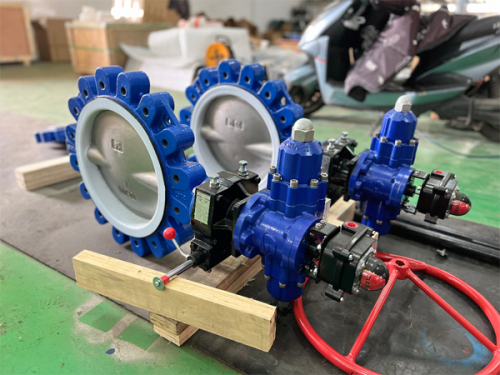
Section 3: Benefits of PTFE Lined Valves
PTFE lined valves provide numerous advantages that make them a preferred choice for a wide range of industrial applications. These valves, known for their durable construction, excel in handling corrosive, abrasive, and high-temperature fluids, thanks to the superior performance of PTFE (Polytetrafluoroethylene) as a lining material. One of their primary benefits is exceptional chemical resistance, which allows them to safely control even the most aggressive substances, such as strong acids, alkalis, or solvents, without risk of degradation or failure. Their durability further extends their operational lifespan, reducing maintenance frequency and minimizing downtime, making them a cost-effective long-term investment.
For industrial environments with specific needs, variations like PFA valve and PTFE valve offer enhanced features such as greater mechanical strength and thermal resistance. Commonly referred to as Teflon valves, due to the branded name for PTFE, these valves also benefit from non-stick properties that prevent residue build-up and ensure smooth, uninterrupted flow, which is especially valuable in critical processes. Beyond these technical advantages, PTFE valves promote operational safety by eliminating leakages and mitigating the risk of hazardous chemical exposure. Overall, the versatility, reliability, and cost-efficiency of these valves make them an indispensable solution in industries such as chemical processing, food production, and pharmaceuticals, where robust performance is essential.

Section 4: Applications of PTFE Lined Valves
PTFE lined valves are indispensable across a wide array of industries due to their ability to withstand harsh operating conditions and handle aggressive substances with ease. These valves are particularly critical in the chemical processing industry, where they ensure safe and efficient management of corrosive liquids such as acids and solvents. The pharmaceuticals sector also heavily relies on PTFE valves, as their non-reactive and non-stick properties make them ideal for maintaining the purity of sensitive formulations. Food and beverage production processes benefit from Teflon valves, given their ability to resist contamination and support hygienic operations.
Furthermore, in environments requiring resistance to extreme temperatures and pressures, such as in power generation or petrochemical plants, PFA valve and PTFE valve options provide enhanced mechanical and thermal stability. These valves also feature prominently in wastewater treatment plants, handling abrasive and sludge-like materials without compromising on performance or durability. Their versatility extends even to industries like mining and semiconductor manufacturing, where precision and reliability are paramount. Overall, PTFE lined valves deliver unmatched efficiency and safety, proving essential in any application where robust flow control and protection against chemical wear are critical.
Section 5: Comparing PTFE Valves with PFA Valve
When comparing PTFE valves with PFA valves, it is crucial to understand their shared characteristics and distinguishing features to determine their most suitable applications. Both types fall under the category of Teflon valves. As they are made using fluoropolymer-based materials that offer exceptional chemical resistance. Making them ideal for handling aggressive substances such as acids, alkalis, and solvents. However, the key difference lies in their material construction and performance parameters. PTFE (Polytetrafluoroethylene) is a highly versatile material known for its low friction, non-stick surface, and broad temperature tolerance. Which makes PTFE valves highly effective for various industrial scenarios. Particularly in processes requiring minimal residue buildup and seamless flow control.
On the other hand, PFA (Perfluoroalkoxy alkane) takes these properties further by offering better mechanical strength and resistance to thermal cycling. Which is especially advantageous in applications involving frequent temperature variations or extreme operating conditions. PFA valve and PTFE valve designs both deliver exceptional reliability. But industries like pharmaceuticals and food processing often favor PTFE for its inert properties. While PFA valves are preferred in environments where enhanced durability under mechanical stress is essential. Such as in petrochemical refining or high-pressure systems.Understanding these differences ensures optimal selection for specific challenges, maximizing both performance and operational efficiency.
Section 6: Teflon Valves vs. PTFE Lined Valves
Teflon valves and PTFE lined valves share many similarities, as both rely on the exceptional properties of Polytetrafluoroethylene (PTFE), a material often branded as Teflon. However, key differences in their construction and design significantly influence their application and performance. Teflon valves generally refer to a broader category of valves made entirely or partially from PTFE. Offering excellent chemical resistance, non-stick properties, and a reliable seal against aggressive substances.
On the other hand, PTFE lined valves are designed with a structural metal body that is lined internally with a PTFE coating. Marrying the strength and durability of metal with the chemical resistance of PTFE. This makes PTFE valves particularly well-suited for applications involving high pressures and extreme mechanical demands. Such as in chemical processing or industrial flow systems, where metal reinforcement provides additional stability. Meanwhile, PFA valve and PTFE valve options cater to highly specialized needs depending on factors like thermal resistance and flexibility. Teflon valves, being less complex in design, are often favored for less demanding systems where pure PTFE is adequate to handle the process requirements. The choice between these two depends largely on operating conditions. Such as temperature, pressure, and the nature of the media, ensuring optimal performance in their respective roles.
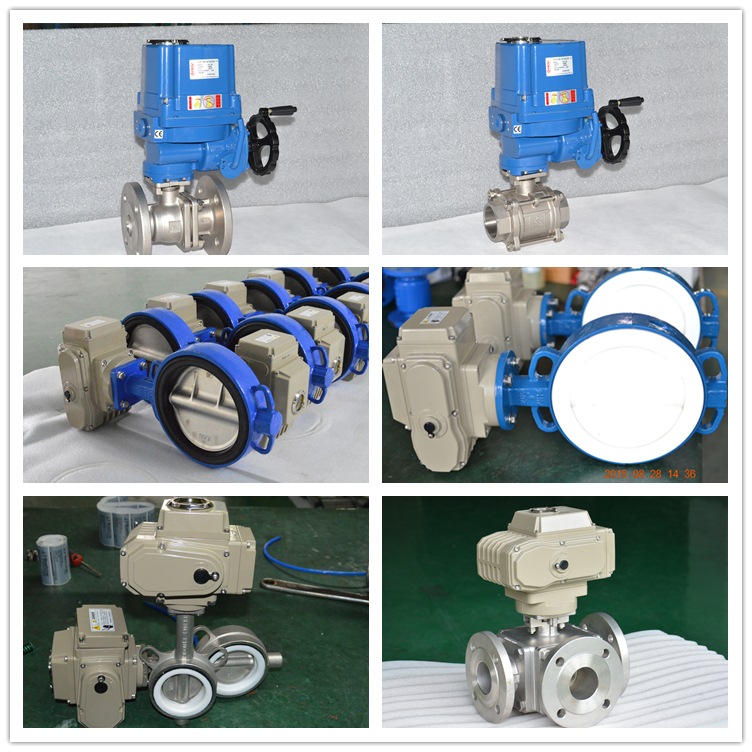
ptfe lined valve Conclusion
PTFE lined valve represents the perfect combination of advanced materials and robust engineering. Delivering unparalleled reliability in industrial applications. By incorporating a protective lining of Polytetrafluoroethylene (PTFE). These valves offer exceptional chemical resistance, ensuring safe handling of aggressive substances like acids, alkalis, and solvents. Whether discussing PFA valve and PTFE valve options or the broader category of Teflon valves. The versatility of PTFE stands out as its defining feature. From its broad temperature tolerance to its low friction and non-stick surface. PTFE enhances the performance of critical flow control systems across industries such as chemical processing, pharmaceuticals, and food production.
PTFE valves, including both fully PTFE-lined and PFA-coated variants. Excel in high-pressure environments and extreme operating conditions where durability is key. Industries requiring precision and cleanliness often rely on these valves to ensure seamless and contamination-free operation. By choosing a PTFE lined valve, businesses not only gain the benefit of superior performance but also reduce maintenance costs and increase operational efficiency. For any industry demanding robust, high-performing, and reliable solutions. PTFE lined valves remain an indispensable option, providing the safety and excellence modern processes require.
The post What is PTFE lined valve? appeared first on Control Valve Manufacturers?.
]]>The post What Are the Top 4 Benefits of Using Y Type Ball Valves in Powder Processing? appeared first on Control Valve Manufacturers?.
]]>Y type ball valve Introduction
Efficient valve systems are at the heart of successful powder processing operations, where precision, durability, and reliability are crucial. Achieving smooth material flow while minimizing disruptions caused by clogging and wear requires advanced engineering solutions tailored to these demanding environments. The Y type ball valves emerges as a standout choice. Specifically designed to address the complexities of handling fine and abrasive powders. Its unique angled design not only reduces material buildup but also streamlines operations. Making it superior to conventional valve options.

Widely valued for its ability to manage high-pressure, high-volume flows with consistency. The Y type ball valves are a game-changer in various industrial applications. By optimizing flow pathways, enhancing process efficiency, and offering long-term reliability. It ensures that powder processing systems operate at peak performance while reducing downtime and maintenance costs. This introduction sets the stage to explore the top four benefits of integrating Y type ball valves into industrial powder processing systems. Highlighting their incredible impact on operational excellence.
Benefit 1: Enhanced Flow Control
The Y type ball valve delivers superior flow control. Making it a crucial component in powder processing systems that require precision and reliability. Its innovative angled design is specifically engineered to address common challenges in handling powders. Such as clogging and uneven material flow. By minimizing material buildup within the valve body, the Y type ball valves ensures a consistent and unrestricted flow,. Even in high-volume or high-pressure applications. This capability significantly reduces the risk of operational disruptions, maintaining smooth performance throughout the process.
Additionally, the valve’s design facilitates versatile flow pathways. Allowing for precise control and direction of materials. Which is essential for optimizing complex powder processing systems. Whether managing fine particulate powders or abrasive substances. The Y type ball valves excels in maintaining operational efficiency. Ultimately reducing downtime and improving overall system reliability. Its performance highlights its potential as a game-changing solution for industries that demand exceptional flow control and dependable operation.
The robust construction of the Y type ball valves ensures it can withstand the challenges of handling fine powders and abrasive particles without frequent replacement or maintenance. This sets it apart as a more cost-effective and dependable solution. While traditional three way valves may suffice for simpler applications. Industries seeking efficiency and resilience in their powder processing systems consistently benefit from the enhanced durability and optimized functionality that the Y type ball valves provides. Its ability to endure the harshest environments while maintaining peak performance demonstrates its role as an essential component in modern industrial operations.

Benefit 2: Durability and Reliability
The Y type ball valve is a benchmark for durability and reliability. Especially in demanding industrial environments that test the limits of standard equipment. Engineered with robust materials and precision design. The Y type ball valves are built to handle the abrasive nature of powders and the extreme pressures often encountered in processing systems. Its construction resists wear and tear caused by the continuous movement of fine or coarse particles. Ensuring a consistently high level of performance even under harsh operating conditions. This exceptional durability translates to fewer malfunctions and a dramatically reduced need for frequent maintenance. Which directly minimizes downtime and operational disruptions.
Additionally, the Y type ball valve’s ability to deliver reliable results over an extended lifespan makes it a cost-effective choice for industries prioritizing long-term efficiency and robust functionality. Whether installed in high-pressure systems or processing abrasive powder materials. The Y type ball valve ensures a dependable operation that upholds system performance and operational excellence. Its durability and reliability make it a smart, lasting investment for powder processing applications.
When it comes to industrial powder processing systems. The choice of valve can significantly impact operational efficiency and system longevity. The Y type ball valves stands as a superior option compared to traditional three way valves. Specifically in terms of durability and reliability under demanding conditions. Unlike standard three way valves, which often face accelerated wear when exposed to abrasive materials or high-pressure environments. The Y type ball valve engineer with advanced design features and high-grade materials that extend its lifespan. Its angled configuration minimizes blockages and reduces mechanical strain. Enabling it to maintain consistent performance over longer periods.
Benefit 3: Process Efficiency Optimization
The Y type ball valve plays a vital role in optimizing process efficiency in powder processing systems. Where precision and consistency are paramount. Its advanced design ensures the smooth movement of materials, reducing the likelihood of blockages and ensuring continuous operation even in the most demanding applications. By facilitating seamless flow and effective material discharge, the Y type ball valve plays a vital role in optimizing process efficiency in powder processing systems. Where precision and consistency are paramount. Its advanced design ensures the smooth movement of materials. Reducing the likelihood of blockages and ensuring continuous operation even in the most demanding applications. By facilitating seamless flow and effective material discharge, the Y type ball valves minimizes energy consumption,. Contributing to cost savings and sustainable operations.

Additionally, its robust and low-maintenance construction translates to significantly reduced downtime. Allowing production lines to run without interruptions. This efficiency is further enhanced by the valve’s ability to handle complex flow requirements with accuracy. Regardless of pressure or volume variations. Its reliable performance in managing intricate material flows ultimately streamlines operations. Ensuring processes are completed faster and more accurately. Whether addressing high-capacity needs or dealing with fine, abrasive powders. the Y type ball valves offers a level of operational refinement that directly improves output and profitability. It is an indispensable component for industries aiming to enhance their processing efficiency while maintaining exceptional quality standards.
Benefit 4: Cost-Effectiveness in Operations
The Y type ball valves stands out as a cost-effective solution in powder processing systems. Offering substantial savings for industrial operations. Its durable design and superior construction minimize the need for frequent repairs or replacements, translating into significantly reduced maintenance costs. Unlike standard valves that are prone to wear under abrasive or high-pressure conditions. The Y type ball valves engineer to handle demanding environments with ease. Ensuring a long lifespan and reliable performance. This extended durability means less downtime for valve servicing or replacement. Allowing operations to maintain productivity and avoid costly interruptions.
Additionally, its ability to streamline flow processes and improve system efficiency contributes to lower energy consumption. Further driving down operational expenses. By delivering dependable performance over time and reducing overall operating costs. The Y type ball valves proves to be a smart investment for industries looking to optimize their cost-to-performance ratio without compromising on quality or functionality.
Furthermore, its durable design ensures a longer lifespan and fewer maintenance demands compared to conventional valves. Industrial operations often suffer from frequent downtimes and elevated repair costs due to wear and tear in less resilient valve types. However, the Y type ball valves excels in withstanding abrasive materials, high pressures, and harsh operational conditions. Ensuring reliable performance over extended periods. By reducing the frequency of replacements and maintenance interventions, this valve offers not only enhanced system efficiency but also substantial savings. For industries aiming to optimize functionality while maintaining budgetary control. The Y type ball valve proves to be an exceptional investment, combining durability, versatility. And cost-effectiveness to meet the most challenging industrial demands.1

FAQ
Q1. What is the warranty period for your Y type ball valve?
Y type ball valve come with a standard warranty period of 12 months (1 years) from the date of delivery. This warranty covers manufacturing defects and materials under normal operating conditions as specified in the product manual.
Q2. How are Y type ball valve prices determined?
Prices for Y type ball valve?is?influenced by several factors. Including the valve’s size, material composition (e.g., stainless steel, brass, or PVC), pressure ratings, end connection types. And any additional customisation or certifications required. Specialised features such as fire-safe designs or anti-static devices can also impact the cost.
Q3. What is the standard delivery time for a Y type ball valve?
Our standard delivery time for tY type ball valve is 4–6 weeks, depending on the order size and customisation requirements. For urgent requests, we offer expedited delivery options upon request.
Our logistics partners ensure fast and reliable delivery to meet engineering project timelines, regardless of location.
Q4. Common Applications of Y type ball valve
Y type ball valve is a versatile valve type designed with three ports for fluid flow. These ports can be configured to allow various functions. Such as mixing, diverting, or completely shutting off flow. Many three-way ball valves feature an L-port or T-port design. Which determines how the flow paths are arranged and controlled.

Y type ball valve Conclusion
The Y type ball valve is a powerful asset for powder processing systems. Offering a suite of advantages that drive operational excellence. Its ability to enhance flow control ensures consistent and precise material transfer. While its durable and reliable construction withstands the toughest industrial environments. By optimizing process efficiency, the Y type ball valve reduces energy consumption and minimizes downtime. Allowing for seamless and uninterrupted operations.
Furthermore, its cost-effectiveness, derived from low maintenance requirements and a long lifespan. Makes it a smart investment for industries aiming to balance performance with affordability.While the Y type ball valve shines in addressing the specific demands of powder processing. Other valve configurations, such as the 3 three way ball valve, 3 way valve, or three way ball valve t port, also play vital roles across broader industrial applications. These versatile options are particularly valuable in systems requiring multi-directional flow control or complex material handling processes. Together, these advanced valve technologies provide industrial operators with diverse solutions tailored to meet a wide array of operational challenges. Whether enhancing flow precision, streamlining processes, or improving cost efficiency. The Y type ball valve and its counterparts serve as cornerstones for industrial success.
The post What Are the Top 4 Benefits of Using Y Type Ball Valves in Powder Processing? appeared first on Control Valve Manufacturers?.
]]>The post What industries are Y-type three-way ball valves used in? appeared first on Control Valve Manufacturers?.
]]>Additionally, they find applications in HVAC systems for temperature and energy control, as well as in manufacturing. Including food and pharmaceuticals, where sanitary and reliable solutions are vital. With their versatility and adaptability. Y-type three-way ball valves are indispensable in modern industrial operations
Y type 3 way ball valve Introduction
Y-type three-way ball valve a highly innovative solution design to tackle complex flow control challenges across various industrial applications. Characterized by their unique design, these valves enable seamless diversion, mixin. Or shut-off of multiple flow paths within a single system. Making them indispensable in operations where precision and versatility are paramount. Their robust construction and advanced engineering ensure reliable performance even under challenging conditions. Such as high pressures, extreme temperatures, or exposure to corrosive substances. These valves optimize efficiency and reduce downtime, particularly in settings requiring high levels of control and automation. From chemical processing plants to water treatment facilities and sophisticated HVAC systems. Y-type three-way ball valves have become a critical component for industries that demand both operational excellence and durability. This article will explore the diverse industries that rely on these valves. Showcasing their unrivaled adaptability and vital role in modern industrial systems.

Understanding the Features and Benefits of Y-Type Three-Way Ball Valves
Y-type three-way ball valve, including the highly versatile Y type 3 way ball valve. Engineer to provide precise control and flexibility in flow management systems. These valves feature a unique design with a Y-shaped structure and a ball mechanism that allows for seamless flow redirection, mixing. Or complete shut-off across multiple paths within a single system. This makes them ideal for complex operations where standard valves might fall short.
One of their key advantages is their ability to handle diverse flow configurations without compromising on performance. Even in high-pressure or high-temperature environments. Durability is another standout feature, as they are often constructed from robust materials like stainless steel. Which ensures resistance to corrosion, wear, and extreme conditions. Additionally, their compact design simplifies installation and minimizes the need for extensive maintenance. Saving both time and operational costs. Whether integrated into automated systems or used manually. These valves drastically enhance efficiency and reliability across a range of applications. Making the Y type 3 way ball valve a trusted choice in industrial processes.
Industrial Applications for Y-Type Three-Way Ball Valve
Y-type three-way ball valves, such as the versatile Y type 3 way ball valve. Serve critical roles across a wide range of industries by providing reliable and efficient flow control solutions. In the oil and gas sector, these valves are essential to handling high-pressure systems and directing or mixing flows in upstream, midstream, and downstream operations. Even under extreme environmental conditions. Chemical processing facilities rely on them to manage aggressive fluids while maintaining strict control over flow configurations. Ensuring operational safety and precision. Similarly, water treatment plants utilize these valves to optimize water distribution, filtration processes, and effective wastewater management.
In HVAC systems, the Y-type configuration supports energy-efficient temperature control by enabling precise adjustment and circulation of coolant or heating flows. Beyond these industries, their robust design and flexibility also make them invaluable in manufacturing sectors like food production, pharmaceuticals, and general material processing. Where clean, sanitary, and reliable components are crucial. The Y type 3 way ball valve’s durability, adaptability. And ability to streamline complex operations make it a fundamental component in modern industrial systems requiring superior performance and reliability.

Oil and Gas Industry
Y-type three-way ball valves, including the robust Y type 3 way ball valve. Are indispensable in the oil and gas industry, where reliability and precision are paramount. These valves engineer to handle the sector’s most demanding conditions. Such as high-pressure environments, extreme temperatures, and exposure to highly corrosive substances. In upstream operations, they play a vital role in controlling the extraction processes. Enabling efficient management of crude oil and gas flows. Midstream activities greatly benefit from their ability to manage complex pipelines. Mixing or diverting flows to ensure smooth transportation and storage.
For downstream processes, such as refining and distribution. Y-type three-way ball valves facilitate precise flow direction, ensuring the integrity and quality of refined products. Their robust construction, often utilizing materials like stainless steel, ensures long-lasting performance under harsh conditions. Additionally, their adaptability to automated systems makes them an ideal choice for modern oil and gas operations. Optimizing processes and minimizing downtime. The Y type 3 way ball valve is a trusted component in the sector. Delivering the durability and efficiency essential for seamless operations across all stages of this industry.
Chemical and Petrochemical Sector
Y-type three-way ball valves, including the highly efficient Y type 3 way ball valve. Are essential components in the chemical and petrochemical industries. Where precision, safety, and durability are critical. These valves specifically design to withstand the challenges of handling aggressive chemicals, corrosive fluids, and high temperatures. Ensuring long-term reliability and operational stability. Thanks to their Y-shaped design and advanced flow control mechanisms. They enable seamless switching, mixing, or redirection of fluids in complex chemical processes. This level of adaptability is crucial for tasks such as mixing reactants, isolating hazardous materials. Or managing byproduct flows, all while maintaining strict safety standards.
By ensuring leak-proof operation and resistance to wear and corrosion. These valves contribute to reducing downtime and enhancing the overall efficiency of chemical plants. Additionally, the Y type 3 way ball valve integrates seamlessly into automated systems. Allowing operators to maintain precision and control over intricate production workflows. Their ability to meet the stringent demands of chemical and petrochemical environments makes them a preferred choice for ensuring safe and efficient operations across these industries.
Water Treatment and Municipal Services
Y-type three-way ball valves, including the highly reliable Y type 3 way ball valve. Play a pivotal role in water treatment facilities and municipal services. Where consistent and efficient water flow management is essential. These valves design to handle varying pressures with ease. Ensuring smooth operation even under fluctuating system demands. Their ability to direct, combine, or shut off flow paths makes them ideal for complex water distribution networks and treatment processes. Constructed from corrosion-resistant materials. These valves well-equip to withstand prolonged exposure to water, chemicals. And environmental factors that might compromise lesser components. This durability is particularly valuable in municipal systems that operate continuously. As it reduces maintenance requirements and guarantees long-term performance.
By seamlessly integrating into automated systems. Y-type three-way ball valves enhance operational efficiency and precision. Supporting the safe and effective management of water resources. Their robust design and proven reliability make the Y type 3 way ball valve a trusted choice for ensuring the uninterrupted and efficient delivery of clean. Treated water to communities and industries alike.
Manufacturing and Process Industries
Y-type three-way ball valves, including the versatile Y type 3 way ball valve. Are indispensable in manufacturing and process industries due to their exceptional ability to manage complex fluid control tasks with precision and reliability. These valves engineer to handle diverse materials, ranging from lubricants and coolants to abrasive and viscous substances. Making them ideal for a variety of industrial applications. Their adaptability allows seamless switching, mixing, or isolation of fluids. Optimizing production workflows and minimizing downtime. Designed with durability in mind, they can withstand demanding environments,. Including high temperatures, varying pressures, and exposure to chemicals. This resilience is critical in fast-paced manufacturing settings requiring consistent performance and reduced maintenance costs.
Additionally, Y-type three-way ball valves integrate effectively into automated systems. Enabling real-time adjustments and enhancing operational efficiency. Their robust design and capacity to ensure precision fluid control make the Y type 3 way ball valve a trusted choice for improving the overall productivity and reliability of manufacturing and process operations

HVAC Systems and Power Generation
Y-type three-way ball valves, including the highly efficient Y type 3 way ball valve. Are integral to HVAC systems and power generation applications, where precise fluid regulation and thermal management are critical. These valves excel at directing, mixing, or isolating fluid flows. Ensuring optimal performance in heating, cooling, and energy transfer processes. Their adaptability makes them particularly useful in managing the complex requirements of thermal systems. Enhancing energy efficiency by minimizing waste and maintaining balanced system operations. Built to withstand extreme pressures, high temperatures, and continuous cycles. Y-type three-way ball valves offer long-term reliability even in the demanding environments of power plants and large-scale HVAC systems.
Furthermore, their precision engineering supports seamless integration into automated setups. Facilitating real-time monitoring and adjustments to optimize energy use. The robust and versatile design of the Y type 3 way ball valve makes it a trusted component for achieving reliable, efficient. And cost-effective performance in HVAC and power generation systems.
Factors to Consider When Selecting a Y-Type Three-Way Ball Valve
When selecting a Y type 3 way ball valve for your application. Several critical factors must be assessed to ensure optimal performance and long-term durability. First and foremost, material compatibility is a key consideration. The valve’s construction material should match the medium it will handle. Ensuring resistance to corrosion, wear, or chemical degradation. For example, stainless steel or high-performance alloys are typically preferred for aggressive mediums. Whereas standard materials may suffice for less demanding tasks. Pressure and temperature ratings are equally vital; the valve must capable of withstanding the operating conditions without risk of failure. Carefully evaluate the flow configuration options. As valves like the three way ball valve t port or L-port offer distinct flow pathways that can be tailored to specific system needs. Whether for directing, mixing, or isolating flow. Understanding these configurations is essential to choosing the most effective 3 way valve for your setup.
Additionally, assess the demands of the application itself. Including whether the system requires frequent cycling, continuous operation, or integration into automated controls. The versatility of the 3 three way ball valve designs allows them to meet a wide range of industrial requirements. But selecting the wrong model may lead to inefficiencies or premature wear. Furthermore, always consider ease of maintenance and installation. As these factors can significantly impact operational costs over time. By thoroughly evaluating these aspects. A well-chosen Y type 3 way ball valve will enhance the reliability, efficiency, and safety of your system. Ensuring seamless functionality even under the most challenging conditions.
Advantages of Y-Type Three-Way Ball Valves in Automation
Y-type three-way ball valves are an invaluable component in automation systems. Offering unmatched precision, reliability, and versatility for managing fluid flow. The innovative design of the Y type 3 way ball valve enables seamless operation in complex flow control tasks. Making it an ideal choice for industries that rely on automated processes to enhance efficiency and reduce operational costs. These valves provide exceptional flexibility with flow configuration options such as the three way ball valve t port and L-port. Allowing operators to direct, mix, or isolate flows based on system demands.
The ability to customize the flow paths gives the 3 three way ball valve a critical advantage in precision applications. Ensuring the smooth handling of diverse flow requirements. Their robust construction and ability to integrate seamlessly into automated setups further enhance their appeal. By enabling real-time fluid management and reducing manual intervention. These valves minimize downtime and optimize overall productivity.

Additionally, their durable design ensures they can operate under rigorous conditions. Including high pressures, extreme temperatures, and exposure to abrasive or corrosive media. Whether used as standalone components or integrated into sophisticated control systems. Y-type three way ball valves consistently deliver unmatched performance. For businesses seeking a reliable 3 way valve solution, the combination of advanced engineering, adaptability. And low maintenance requirements positions the Y type 3 way ball valve as a standout choice for automation environments.
FAQS
1.What warranty do 3 way ball valve typically come with?
Warranties for ball valves vary by manufacturer but often range between 12 and 24 months. Covering defects in materials or workmanship. Always review the warranty terms provided by the supplier to understand what is included and the process for resolving claims.
2.What is the usual lead time for a 3 way ball valve order?
Lead times can vary based on the valve specifications, quantity, and manufacturer. Standard products in stock often ship within a few days. while custom or large-scale orders may take 4-8 weeks. For precise timelines, consult your chosen valve supplier.

3.What are the standard price terms for 3 way ball valve?
Price terms depend on the contract agreement, but common terms include CIF (Cost, Insurance, and Freight), FOB (Free on Board), or EXW (Ex Works). Factors affecting pricing include valve size, material, actuator type, and additional customizations. Always confirm the pricing structure with your manufacturer before finalizing the purchase.
4. What applications are Y type 3 way ball valve suitable for?
3 way ball valves are widely used in industries such as chemical processing, HVAC systems, water treatment plants, oil and gas, and pharmaceutical production. They are well-suited for applications that demand reliable automated control, especially in environments requiring high performance and minimal manual intervention.
Y type 3 way ball valves Conclusion
Y-type three-way ball valves, including the reliable Y type 3 way ball valve, are utilized across a vast array of industries, demonstrating their essential role in enhancing system performance and reliability. These valves are indispensable in water treatment facilities, where they manage and regulate water flow while withstanding corrosive environments to ensure clean and effective distribution systems. The manufacturing and process industries rely on the versatile 3 three way ball valve to handle a range of materials efficiently, optimize production workflows, and maintain precision in fluid control.
Similarly, HVAC systems and power generation applications benefit from their ability to regulate thermal systems, manage complex flow configurations, and enhance energy efficiency through designs such as the three way ball valve t port and L-port options. Automation systems further highlight the adaptability of the 3 way valve by showcasing its real-time control capabilities and seamless integration into automated setups, reducing downtime and promoting productivity. Across all these industries, the robust construction and precise engineering of Y-type three-way ball valves make them a trusted choice for even the most demanding operational environments. By offering advanced flow control with minimal maintenance, these valves play a pivotal role in driving efficiency and ensuring reliable performance in applications ranging from municipal services to high-tech industrial systems.
The post What industries are Y-type three-way ball valves used in? appeared first on Control Valve Manufacturers?.
]]>The post The difference between 135 degree and 120 degree Y-type three-way ball valve appeared first on Control Valve Manufacturers?.
]]>3 way ball valve Introduction
3 way ball valve is a vital component in modern industrial systems. Designed to efficiently manage multi-directional flow within a single compact unit. Featuring three ports for inlet and outlet flow paths, the 3 three way ball valve enables operators to control, mix, or divert fluid or gas flow with precision and ease. Its unique design incorporates a rotating ball with internal flow channels. Allowing for various configurations such as T-port or L-port to meet the specific demands of an application.
These valves are integral to industries ranging from chemical processing and water treatment to oil and gas. Where maintaining reliable flow control is paramount. The adaptability of 3 way ball valves makes them an optimal choice for applications requiring multiple flow paths or connection points. Rducing the need for additional piping and minimizing system complexity. Whether used manually or integrated into automated systems. Their durability and robust construction ensure consistent performance even under high-pressure conditions.


?3 way ball valve importance in flow control systems
3 way ball valve, basic structure consists of a rotatable ball with a T-shaped or L-shaped bore that allows fluid to flow through various pathways. Enabling seamless switching or mixing between different lines. This functionality makes three-way ball valves highly versatile. Accommodating a broad range of industrial applications, from chemical processing to water treatment and energy production. By combining flow direction and control within a single valve. They significantly reduce the need for multiple separate valves, simplifying piping systems and minimizing installation complexity. Additionally, their robust design ensures reliable operation under varying pressure and temperature conditions. Enhancing overall system efficiency and reducing downtime. With their adaptability and effectiveness, three-way ball valves play a critical role in streamlining processes and optimizing performance across diverse industries.
comparing the differences between 135-degree and 120-degree Y-type 3 way ball valve
The key differences between 135-degree and 120-degree Y-type three-way ball valves lie in how their angles impact functionality. Space efficiency, and application suitability. The 135-degree Y-Type 3 way ball valve stands out for its ability to handle higher flow capacities with minimal resistance. Making it ideal for industries requiring smooth substance redirection. Such as chemical processing and energy production. Its wider angle reduces turbulence, promoting operational efficiency in systems prioritizing high volume and pressure management. However, its larger configuration may pose challenges in compact installations.
The 120-degree Y-Type 3 way valve is designed for tighter spaces. Offering precise flow control and optimized performance in applications with spatial constraints. Such as water treatment facilities and small-scale industrial systems. While its narrower angle enhances installation flexibility, it may slightly limit flow efficiency in high-capacity scenarios. These differences influence the selection process. As industries must decide between prioritizing flow efficiency with the 135-degree option or maximizing space utility and precision with the 120-degree counterpart, ensuring the valve aligns with their specific operational demands.
What is a Y-Type 3 Way Ball Valve?
3 way ball valve,Y-Type valve is a specialized variation of the standard 3 way ball valve. Engineered to provide heightened precision and flexibility in flow control systems. Unlike traditional designs, the Y-Type configuration features angled ports that facilitate smoother transitions between multiple flow paths. Making them particularly advantageous in complex piping systems. These valves house a rotating ball with internal passages that align with the ports. Enabling operators to direct, combine, or isolate flow as needed.
3 three way ball valve, of this type is ideal for industries requiring reliable and efficient redirection of fluids or gases, such as chemical manufacturing, water systems, and energy production. The Y-Type design stands out for its ability to manage high-pressure conditions while maintaining compactness. Which reduces space requirements in tight installations. By offering varying angles, like 120-degree and 135-degree options, these valves cater to specific operational demands. Ensuring seamless performance and adaptability in any application.
Key Differences Between 135 Degree and 120 Degree Y-Type Designs
3 way ball valve, The key differences between the 135-degree and 120-degree Y-Type three-way ball valve designs lie in their structural configurations, flow efficiency, and industrial adaptability. A 135-degree Y-Type 3 way ball valve offers greater flexibility for managing complex multi-directional flow patterns. Its wider angle allows for smoother transitions and reduced flow resistance. Making it ideal for systems requiring seamless redirection, especially in applications with high flow rates or diverse operational demands.
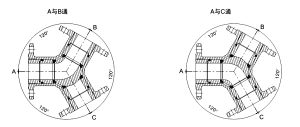
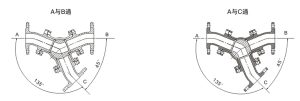
On the other hand, the 120-degree Y-Type 3 three way ball valve is more compact. Suited for confined spaces where installation dimensions are a critical factor. While it may not provide the same level of flow optimization as the 135-degree design. Its tighter angle ensures precision in systems with controlled flow requirements. Both designs excel in durability and performance, but the choice between the two often depends on the specific operational environment. The 135-degree version is better for high-capacity systems or those needing extensive flow adaptability. While the 120-degree model is preferred in industries where spatial constraints and precise, straightforward flow control are prioritized.
3 way ball valve Structural and Design Variations
three-way ball valve exhibit notable structural and design variations that significantly influence their functionality and suitability for diverse industrial applications. These valves can feature different port configurations, such as L-port or T-port designs, tailored to specific flow control requirements like mixing, diverting, or isolating mediums. The materials used in their construction, ranging from stainless steel to specialized alloys. Play a critical role in ensuring durability, especially in harsh environments involving high pressure, extreme temperatures, or corrosive substances.
Additionally, the angled port configurations, such as the 120-degree and 135-degree variants, design to enhance flow efficiency and system integration, depending on space constraints and operational complexity. These design choices not only improve the robustness and performance of systems using a 3 way ball valve but also simplify maintenance processes. Further optimizing operational efficiency. By addressing industry-specific needs. Such as pressure management or temperature resistance, these structural variations reinforce the adaptability and reliability of 3 way ball valve systems in a wide range of applications.
Applications of 135 Degree and 120 Degree Y-Type Three-Way Ball Valves
3 way ball valve, 135-degree and 120-degree Y-Type three-way ball valves are essential components in various industries. Each offering unique advantages for specialized applications. The 135-degree Y-Type 3 way ball valve is particularly well-suited for systems requiring fluid redirection with minimal flow resistance. Such as in chemical processing plants, where seamless mixing and diverting of reactive compounds are critical. Its wider angle supports high-capacity flow. Making it ideal for large-scale applications like energy production, where adaptable flow management under high pressures ensures operational efficiency.
The 120-degree Y-Type 3 way valve excels in confined spaces. Such as compact water treatment facilities or industrial setups with limited installation room. Its tighter angle allows for precise flow control. Making it perfect for systems prioritizing straightforward and measured redirection. Both configurations play pivotal roles in optimizing system performance and reliability. By addressing specific needs—whether it’s handling aggressive chemicals. Managing high-pressure environments, or fitting into compact systems—these Y-Type designs highlight the versatility and ingenuity of 3 way ball valve technologies across industries.
Advantages of Y-Type Three-Way Ball Valves (120° and 135° Angles)
Three-Way Y-Type Ball Valves with 120° and 135° angles offer versatile advantages that cater to a wide range of industrial needs. Making them indispensable in systems that require efficient and reliable flow control. The 135° Y-Type 3 way ball valve stands out for its ability to handle complex flow paths with minimal resistance. Enabling seamless redirection and mixing of substances. This design is especially advantageous in high-capacity applications. Such as those in the chemical processing and energy production sectors. Where smooth transitions and adaptability to fluctuating pressures are critical for maintaining system efficiency.
On the other hand, the compact 120° Y-Type 3 way ball valve excels in spaces with constrained dimensions. Providing precise control without compromising performance. Its tighter angle is particularly beneficial in water treatment plants and small-scale industrial setups. Where accurate flow direction is paramount. Both designs are crafted to enhance durability and operational flexibility, ensuring reliable performance under varying conditions. Whether managing aggressive chemicals or optimizing systems with high-pressure requirements. These valves not only streamline processes but also improve overall system reliability by offering tailored solutions for diverse industrial applications.

3 way ball valve Factors to Consider When Choosing Between a 135 Degree and 120 Degree Valve
When choosing between a 135-degree and 120-degree Y-Type 3 way ball valve. Several critical factors must be considered to ensure optimal system performance and reliability. Space constraints are a primary consideration; a 120-degree Y-Type 3 way valve is better suited for installations with limited room. As its tighter angle allows for compact and efficient integration without sacrificing flow control accuracy. Conversely, the 135-degree Y-Type 3 way ball valve, with its wider angle, offers superior flow efficiency. Making it an ideal choice for high-capacity systems that prioritize minimal flow resistance and seamless substance redirection. Flow requirements are another key factor, as the wider 135-degree angle supports the mixing and diverting of greater volumes. While the 120-degree angle is tailored for precise, controlled flow paths in smaller-scale operations.
Additionally, pressure and temperature conditions play a vital role in the selection process. Systems operating under extreme pressures or handling aggressive chemicals may require materials and configurations that align with the specific capabilities of either valve. The decision also depends on the broader industrial application. For instance, the energy and chemical sectors often benefit from the versatility of a 135-degree valve, while water treatment facilities may find the 120-degree valve better suited for confined spaces and straightforward flow management. Ultimately, selecting the right angle involves balancing flow efficiency against installation flexibility. Ensuring the valve aligns with operational demands to deliver both robustness and reliability in any application.
?FAQ 3 way ball valve
Q1. What is the warranty period for your three-way ball valves?
3 way ball valve come with a standard warranty period of 12 months (1 years) from the date of delivery. This warranty covers manufacturing defects and materials under normal operating conditions as specified in the product manual.
Q2. How are 3 way ball valve prices determined?
Prices for three-way ball valves are influenced by several factors. Including the valve’s size, material composition (e.g., stainless steel, brass, or PVC), pressure ratings, end connection types. And any additional customisation or certifications required. Specialised features such as fire-safe designs or anti-static devices can also impact the cost.
Q3. What is the standard delivery time for a three-way ball valve?
Our standard delivery time for three-way ball valves is 4–6 weeks, depending on the order size and customisation requirements. For urgent requests, we offer expedited delivery options upon request.
Our logistics partners ensure fast and reliable delivery to meet engineering project timelines, regardless of location.
Q4. Common Applications of Three-Way Ball Valves
3 way ball valve is a versatile valve type designed with three ports for fluid flow. These ports can be configured to allow various functions. Such as mixing, diverting, or completely shutting off flow. Many three-way ball valves feature an L-port or T-port design. Which determines how the flow paths are arranged and controlled.

3 way ball valve Conclusion
The key differences between 135-degree and 120-degree Y-type three-way ball valves lie in how their angles impact functionality. Space efficiency, and application suitability. The 135-degree Y-Type 3 way ball valve stands out for its ability to handle higher flow capacities with minimal resistance. Making it ideal for industries requiring smooth substance redirection. Such as chemical processing and energy production. Its wider angle reduces turbulence, promoting operational efficiency in systems prioritizing high volume and pressure management. However, its larger configuration may pose challenges in compact installations.
3 way ball valve, the 120-degree Y-Type ball valve is designed for tighter spaces. Offering precise flow control and optimized performance in applications with spatial constraints. Such as water treatment facilities and small-scale industrial systems. While its narrower angle enhances installation flexibility. It may slightly limit flow efficiency in high-capacity scenarios. These differences influence the selection process. As industries must decide between prioritizing flow efficiency with the 135-degree option or maximizing space utility and precision with the 120-degree counterpart. Ensuring the valve aligns with their specific operational demands.
The post The difference between 135 degree and 120 degree Y-type three-way ball valve appeared first on Control Valve Manufacturers?.
]]>